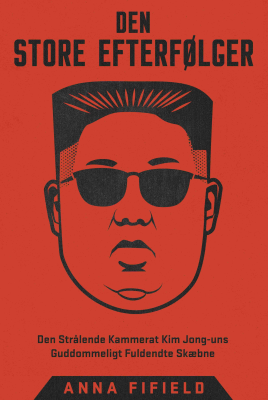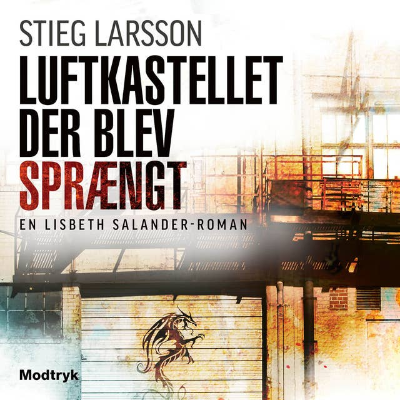
Age of Conquest: A Kings and Generals Podcast
engelsk
Historie & religion
Begrænset tilbud
2 måneder kun 19 kr.
Derefter 99 kr. / månedOpsig når som helst.
- 20 lydbogstimer pr. måned
- Podcasts kun på Podimo
- Gratis podcasts
Læs mere Age of Conquest: A Kings and Generals Podcast
Kings and Generals Podcast
Alle episoder
305 episoder3.183 Fall and Rise of China: The end was near for Changkufeng
Last time we spoke about the second Russian Counter Offensive over the Heights. Night operations opened the action: scouts moved in darkness, wires were cut, and Hill 52 fell before dawn, followed by Shachaofeng as dawn pressed the front. The Russians responded with a heavy counterattack, tanks, aircraft, and sustained artillery, yet the Japanese adapted quickly, shifting guns and reinforcing sectors to hold the crest. By 3–5 August, Japanese and Soviet forces fought in a fragmented front across multiple sectors: Hill 52, Changkufeng, Shachaofeng, the lake. Japanese commanders coordinated between infantry, engineers, and mountain artillery, while seeking long-range support from Kwantung Army. Soviet artillery sought to disrupt lines of communication and press from the Crestline with massed tanks and air strikes. Despite intense bombardments and repeated tank assaults, Japanese regimental guns, antitank teams, and close-quarters defense bore the brunt of the defense, inflicting heavy Soviet losses. Yet in the end the Japanese had yet again repelled the enemy from the heights. #183 The end was near for Changkufeng Welcome to the Fall and Rise of China Podcast, I am your dutiful host Craig Watson. But, before we start I want to also remind you this podcast is only made possible through the efforts of Kings and Generals over at Youtube. Perhaps you want to learn more about the history of Asia? Kings and Generals have an assortment of episodes on history of asia and much more so go give them a look over on Youtube. So please subscribe to Kings and Generals over at Youtube and to continue helping us produce this content please check out www.patreon.com/kingsandgenerals. If you are still hungry for some more history related content, over on my channel, the Pacific War Channel where I cover the history of China and Japan from the 19th century until the end of the Pacific War. While the front-line fighting raged on 6 August, Tokyo moved to supply the 19th Division with the coveted long-range artillery and antiaircraft support. In the evening, the Korea Army officially learned from the AGS that, by Imperial order, the Kwantung Army would add the strength already informally approved: four 7.5-centimeter field guns, two 15-centimeter cannons, two 10-centimeter railway guns, and two 7.5-centimeter antiaircraft guns. The North China Area Army would also provide mobile antiaircraft units. The Korea Army estimated that the field and heavy artillery reinforcements would reach the town of Tumen on 7–8 August. The new guns were expected to ease the division's pressure in due course. The fighting continued on the 7th. The 75th Infantry observed that, despite the Russians' vigorous attacks aimed at capturing Hill 52 and Changkufeng on 6 August, they failed at both objectives and were repelled with heavy losses. Because of the Soviets' ignominious defeat at Changkufeng, they seemed determined to seize Hill 52 on 7 August. Most of the shallow and isolated Japanese positions at Hill 52 had been shattered by bombardments. Some men retrieved Japanese corpses still piled atop one another; the wounded were to proceed to the rear by themselves. Many had not eaten since the morning of 6 August, yet morale remained high. It was decided to knock out the Soviets' advancing tanks under the cover of darkness, employing infantry and engineers. At 03:00, these elements moved against the armor 150 meters behind the Russian wire, killed some advancing infantry, and destroyed two tanks. The infantry platoon leader, Warrant Officer Kanaoka, jumped aboard a tank, pried open the turret, and fought with his blade as blood dripped from the blade. The eastern sky brightened as he stood there smiling and holding his bloodied sword; at that moment, Private First Class Kimura exploded a grenade inside the tank, which promptly blew up. The assault force returned safely at dawn. At dawn, from heavy-weapon positions 200–300 meters in front, the Soviets opened fire, exploiting gaps between the smashed armor. Since 04:00, sixty Russian tanks had been moving south on the far side of Khasan. By daybreak, more than ten machines could be seen in the dip northeast of Hill 52, with several dozen other tanks newly active along Hill 29 Crestline as infantry deployed in gullies. At 05:30, Russian artillery began firing from all directions. In addition to shelling from Gaho, Hill 29, and Maanshan, the Soviets directed flank fire against Hill 52, using two rapid-fire guns 700 meters northeast and three mountain guns on the slope of Changkufeng. As the works at Hill 52 were progressively pulverized, K. Sato dispatched reinforcements from the 76th Regiment there. Near 11:00, the Russian barrage intensified and became more accurate; positions were destroyed one by one, and casualties rose. A new apex of fury occurred between 13:30 and 14:30, when a pall of smoke blanketed the region, producing a ghastly impression. Russian planes bombed and strafed Hill 52 from 11:00; a raid by twelve bombers against the western slope at 13:30 was particularly fierce, though many bombs fell harmlessly into the Tumen. The Russian lines were built up gradually, and all types of Soviet weapons were employed. From 14:30, about 100 Russians approached, led by four tanks, and penetrated the defense positions. Close-quarter counterattacks were launched by elements of three Japanese infantry companies, a machine-gun platoon, and an engineer platoon. One officer recalled "It was tough and costly fighting. Men were overrun by tanks, some losing limbs." Nine engineers linked up with the infantry, placing explosives under tank turrets and blowing up two machines. During the crisis, with tanks and infantry overrunning his lines. From the right wing, in the Eleventh Company sector, the Japanese fought fiercely against Soviet heavy weapons and infantry who had advanced to point-blank range. Master Sergeant Suzuki, acting company commander, on his own initiative ordered the main force to counterattack. Through coordinated action, the Japanese knocked out four tanks that had penetrated their positions. Two enemy battalions that had "come close bravely" were nearly wiped out. Total Soviet strength committed in this sector amounted to three battalions and forty tanks. Japanese losses on the Hill 52 front were heavy indeed: seventy-four had been killed and eighty-five wounded, one hundred fifty-nine out of three hundred twenty-eight men in action. The remnants of one infantry company were commanded by a superior private; sergeants led two other infantry and two machine-gun companies. Seven of thirteen heavy weapons were inoperable. Meanwhile 9th Company elements defended Noguchi Hill, 800 meters southeast of Changkufeng. By 05:00 on 7 August, Soviet troops facing the hill numbered 200 infantry, five tanks, and two rapid-fire guns. From positions set up the previous night along the lake, the Russians opened fire at dawn while 50 soldiers moved to attack with the tanks in support. Captain Noguchi's men poured fire on the enemy and inflicted heavy losses. But the Russians, who possessed superior supporting fire, fought their way forward until, after 40 minutes, they got within 70 meters. The Soviet tanks disappeared into a dead angle near the lakeshore. When the fog lifted at 06:00, the Russians on the southeast slope of Changkufeng fired down at Noguchi Hill with four heavy machine guns. Seven tanks, advancing anew from the gully northeast of Hill 52, came as close as 80 to 200 meters, deployed to encircle, and opened fire. By now, eight Japanese had been killed and five wounded; most of the light machine guns and grenade dischargers had been crippled and all three heavy weapons were out of action. The Russians attacked again at 08:00, hurling grenades and shouting. A dozen tanks operated in support of two infantry companies. The Japanese responded with grenades; yellow and black smoke masked the heights, and the scene was extremely impressive. Desperate hand-to-hand combat raged along the sector for a half-hour until the Soviets fell back after suffering enormous losses. At 10:40, the Russians assaulted with infantry from the southeast front and from the Changkufeng direction, aided by tanks from the zone between. Captain Noguchi sortied with his remnant, charged the Russians, and drove them off. In this fighting, however, he was shot in the chest and most of his subordinates were killed or wounded. Somehow the captain stayed on his feet. He and six survivors threw grenades at the Russians, who were now behind the Japanese, and then he led a last charge back to the highest positions. Once the enemy had been evicted, Captain Noguchi collapsed. Only three or four soldiers were in fighting condition. The captain begged them to report to Sato, but, refusing to abandon him, the men managed to help him down to the rear. It was 11:30. Captain Noguchi's unit, which had fought bravely since the first combat on 6 August, had been destroyed. Of 78 officers and men, 40 lay killed and another 31 wounded. The hill had been lost. Meanwhile, Soviet bombardment of the Hill 52 district had been heavy, and phone contact with the regiment was severed. Suddenly, the indomitable Captain Noguchi appeared at headquarters, and the regiment finally learned that the foe had penetrated the defenses. The bleeding captain pleaded for a counterattack and kept trying to return to the fight; K. Sato had to restrain him by ordering him to leave for the rear. It was true that the position Captain Noguchi had occupied was the key point connecting Hill 52 and Changkufeng. But Sato reasoned that if they held solidly to the latter hills, their defenses would never be in danger, and it would be easy to retake Noguchi Hill at any time by concentrating fire from all the high ground and by employing artillery, once strength could be spared. Around sunset, however, Sato received an order from the brigade, and a report came from Changkufeng that "our troops' brave fighting has tied us over the crisis." Reassured, Sato proceeded to Hill 52, cheered on Kojima and the soldiers, and examined the condition of the wounded and the heaped-up corpses. The 75th Infantry estimated that there had been 900 Russian casualties in the right sector and that more than ten tanks and three heavy machine guns had been put out of action. The regiment itself had lost four officers killed and had four wounded. In the entire right sector which included 1,332 men in action, 140 had been killed and 180 wounded. Seven soldiers of the 75th Infantry were also listed as missing in action but presumed dead. Total casualties including the missing, as a percentage of those listed as engaged, amounted to 25 percent for the right sector unit. On the 7th, the unit had lost 19 machine guns and 11 grenade dischargers. As of 18:00 on 7 August, Japanese intelligence estimated that the Russians had committed a grand total of 25 infantry battalions, up six from 6 August, 80 artillery pieces, up 10, and 200 tanks . Situation maps showed one Soviet infantry battalion east of Changkufeng, another north of Hill 52, armor and infantry in unknown strength east of that hill, and artillery positions from northeast to southeast of Khasan. On the 7th, spotters also observed seven large steamers entering Posyet and Khansi, as well as one 10,000-ton vessel at Yangomudy. At least 200 or 300 enemy soldiers in the Karanchin sector were working to strengthen positions. Units moving south from Novokievsk included 350 trucks, 60 tanks, and 400 troops. Heading north from the region of the battlefield were 100 trucks and 150 horsemen. Meanwhile, on the front in eastern Manchuria, elements of the Kwantung Army's 8th Division had forcibly ousted a small party of Soviet border trespassers. The "punch" had gone out of the Russians in the Hill 52 sector after their thorough defeat on 6 and 7 August, but they continued to build up firepower, deploying heavy weapons and artillery observation posts. The bombardments grew more accurate; even regiment and brigade headquarters lost their last dead angles. By daylight on the 8th, two Soviet infantry battalions plus tanks were deployed on the Hill 52 front. Their main forces were distributed along a line 800 meters from the Japanese, and snipers and machine gunners held positions 200 to 300 meters away. "Each time they detected movement, they sniped at us and interfered with our observation." From 09:00, the Japanese sustained scattered artillery fire. At 13:30 there was a bombing raid by 15 planes, but no casualties were incurred. Soviet guns pounded Hill 52 around 18:30, and the Japanese suffered four or five casualties, but morale was generally high, and they sought to strengthen and repair their positions throughout the night. On the Changkufeng front, which had drawn rather serious attention, Russian heavy guns opened slow fire after 05:00 from east of Khasan and from Maanshan. Through the night of 7–8 August, Soviet infantry had assembled near the lake crossing. Russian troop strength increased beyond one-and-a-half battalions. The defenders ran out of grenades and had to resort to rocks, but by 10:00 the Soviet assault waves began to weaken after five hours of fierce resistance. Supporting the Japanese lines had been barrages by grenade launchers, flank fire by a heavy-machine-gun platoon at Chiangchunfeng, and supported by the mountain artillery. Around 10:30, the attackers fled to Khasan. The battlefield quieted, but enemy snipers dug foxholes 300 meters away and kept up persistent fire, and infantry mounted repeated attacks in varying strength. Since morning, the mountain gun and the two battalion guns at Fangchuanting had engaged infantry and machine guns that appeared on the middle of the Changkufeng crest as well as in the Hill 52 area. The timely fire from these guns caused severe losses, especially to Russian observation posts. But Lieutenant Maeoka, who commanded the mountain platoon from Changkufeng, was wounded badly at 10:30. The mountain battalion also fired at targets in the Changkufeng sector from the Korean side of the Tumen. At 13:20, the Russians pressed new attacks against Changkufeng from three sides, using a total of two companies and three tanks. Although they got close and attacked persistently, they were driven off each time; these afternoon efforts were not very vigorous. Fighters strafed at low altitude and more than ten bombers attacked near 15:00, igniting fires in the village of Fangchuanting. The raids by planes and guns caused frequent cuts in signal lines again. At 06:50 on the 8th, Soviet forces in the left sector resumed their efforts until they were pinned down at 100 meters and had to dig in. Excepting spotter posts, everyone must enter shelters from warning till all-clear. Meanwhile, T. Sato estimated that although enemy attacks were aimed mainly against Changkufeng, there existed some danger that hostile forces would cross the Tumen near Yangkuanping and launch a sudden attack against our left rear, as actions in that area had become pronounced. He accordingly issued an order at 17:00: all of us, superiors as well as subordinates, must overcome exhaustion, make nighttime guardings rigorous, and leave the foe not the slightest opening between friendly battalions or from the shores of the Tumen River. Suetaka estimated in the morning of the 8th that the Russians were trying to generate propaganda advantageous to them at home and abroad by staking their honor and seizing Changkufeng quickly. From the standpoint of overall political tactics, it was imperative to thwart their intentions. The enemy relied consistently on elements that remained on the Crestline southeast of Changkufeng and served as a base; they must be deprived of that attack base. If his assault plans were to be successful, the 37th Brigade would require reinforcement. The first battalion-size elements of Cho's infantry were arriving. As an initial step, Hanyu's battalion should cross the Tumen and join the brigade, while the main body of the regiment, due that afternoon, should be ready to enter the lines. The division chief of staff issued an order in the name of Suetaka, stipulating that the division would secure its positions while adhering to the great policy of nonexpansion. At 22:30 Morimoto speculated that the Russians were hoping for the good fortune of retaking Changkufeng. Strict guard measures were enjoined. Eventually, before midnight, Suetaka met Cho at Seikaku station. To implement Suetaka's request that the Russian foothold southeast of Changkufeng be wiped out soon, Morimoto decided in the morning to employ the new battalion from Cho's regiment. But since Hanyu's unit was delayed by enemy fire, Morimoto had to turn to the reserve 76th Regiment. At 16:00 Okido was told to prepare an attack, using one infantry battalion and an engineer squad. The mission was to take advantage of darkness to expel the foe remaining on Changkufeng, secure the heights in concert with the elements on the hill, and smash any serious attack at night. At 17:00 Okido issued his detailed order. Enemy elements were located near the cliff close to the northern top of Changkufeng. Apparently hostile bases existed in scattered fashion on the southern slopes as well, as well as a rather large base on the middle of Akahage "Red Bald" Hill, formerly held by Captain Noguchi's company. The regiment was to drive those forces north of Hill 52. The 3rd Battalion commander, Major Hashimoto Seishiro, was to direct both companies' assaults, and, once the foe had been ousted, secure the locations until dawn, after which he would return to the reserve unit. On the 8th, at 19:30, Hashimoto proceeded with his battalion staff to the foot of Changkufeng and conferred with Major Sato and Captain Shimomura, the majors commanding the units with which he was to cooperate. The assault units moved out from Chiangchunfeng, but their timing was thrown off by a half-hour of artillery checking fire from northeast of the lake. At 20:50, Captain Iwai's 10th Company, supported by a machine-gun platoon, attacked the rock corner on the east side of Changkufeng. After cutting down Soviet sentries, the Japanese rushed in; 40–50 Russian soldiers retreated toward Akahage. On that hill there had been only 20–30 Soviet troops to begin with, but their strength had been built up to two companies plus tanks and infantry guns. The Russians laid down violent small-arms fire, causing 17 Japanese casualties in a short period, after which 30–40 enemy soldiers sought to counterattack. The Japanese drove back this effort, readied their own offensive, and continued to launch close assaults against the heavy-machine-gun nest at the rock corner. Simultaneously, Captain Shidara's 7th Company jumped off with five attached demolition engineers. The 1st Platoon broke through the entanglements and cut down lookouts while the 2nd Platoon proceeded to mop up footholds on the north side—about ten Russian soldiers who dotted the slope at four locations. In the process, the company ran into the positions Iwai had been attacking. Terrain and enemy fire dictated a detour south of the ridgeline. Shidara's men moved up behind Iwai on the right, joining Hashimoto's command. The battalion commander consolidated his lines and directed reconnaissance preparatory to an attack against Akahage. Hours passed; Okido, at the command post, decided it might be wiser to wait till daybreak and call for artillery support. Hashimoto then issued his own instructions from the eastern salient, cautioning his men to dig in well. Near 04:00 the redeployments were completed, but construction did not progress due to the rocky terrain; soldiers were barely able to scoop knee-high firing trenches by daybreak. Total Russian losses on the 8th were estimated to exceed 1,500. More than 100 tanks were claimed publicly, and it was "confirmed" that since the 1st, six planes had been shot down, two of which had fallen behind Japanese lines. In Tokyo, the war ministry and the Gaimusho denied categorically that the Russians had retaken Changkufeng. Soviet troops had attempted to rush positions 600 feet from the crest at 1400 hours; after two and a half hours of furious hand-to-hand fighting, they were beaten off with presumably heavy casualties on both sides. Soviet tanks were reported moving north from Posyet Bay, though it remained unclear whether this indicated withdrawal or strategic movement. Right sector casualties were relatively light on 8 August: eight killed and 41 wounded, the 75th Infantry suffering five and 38 of these respectively. Officer casualties were proportionately high: two wounded in the 75th Regiment, one in the 76th Regiment, and a fourth in the mountain artillery. Personnel rosters of the 75th Regiment, as of 30 July and 8 August, showed a reduction from 1,403 to 826, down 41 percent. The cumulative effect of Japanese losses and the scale of Soviet commitment troubled the Korea Army. Suetaka reported Japanese casualties as: through 2 August, 45 killed, 120 wounded; from 3-5 August, 25 killed, 60 wounded; since 6 August, killed unknown, 200 wounded. Remarkably, the same casualty totals were released publicly by the war ministry on the night of the 8th. Throughout 9 August at 15:20 the Japanese were hit by a very intense barrage from Hill 29. The mountain gun was damaged by shellfire and had to be moved to the foot of Fangchuanting. Tanaka had ordered his artillery to conduct long-range artillery neutralization and communications-cutoff fire, and short-range neutralization as well as checking fire. The accuracy of our artillery elements had improved, and the power of our guns had been enhanced greatly. On the left, from 05:30, T. Sato dispatched an antitank platoon, under cover of mist, to finish off immobilized Soviet tanks whose main armament was still operational and which had done some severe firing the day before. As the day wore on, spirits rose, for the men heard the roar of friendly 15-cm cannon laying down mighty neutralization fire against enemy artillery. Near 14:15, Russian troops were detected creeping forward in the woods 400 meters away on the right. Supporting mountain artillery wiped out this threat in short order. Suetaka decided to move his division headquarters to Seikaku and his combat command post to the Matsu'otsuho message center. Anxiety about the Wuchiatzu sector to the north had diminished greatly; in addition, the entire strength of the division had already been brought to the front. Lastly, dealings with the Seoul and Tokyo levels had by now become rather secondary in importance. Suetaka could discern the steady, disturbing exhaustion of his front-line troops. On the other hand, newly arrived Cho was raring to go. After receiving authorization from Suetaka, Cho allowed Nakajima's battalion to cross the river at Matsu'otsuho but kept Osuga's battalion on the Korean bank as division reserve. Since Tanaka had surmised that the Russians' intention was to direct their main offensive effort against the Japanese right wing, it seemed best to transfer the mountain guns to strengthen the right sector positions. The brigade order of 17:30 endorsed Tanaka's shift of defensive emphasis, particularly with regard to the artillery and the new elements from Cho's regiment. Morimoto added that the core of the Soviet assault force southeast of Changkufeng amounted to two infantry battalions. T. Sato accordingly ordered Obo's battalion to integrate its heavy firepower and deliver swift fire in timely fashion. Soon afterward, Obo discerned a massed battalion of Russian infantry, who had been hauled up by trucks, on the northeastern skirt of Changkufeng. He unleashed every available weapon, organic and attached, at 19:30. The Soviets seemed taken completely by surprise; they showed extreme bewilderment and dispersed in an instant. The right sector unit estimated that on 9 August it had caused 450 casualties, stopped five tanks, and knocked out one light artillery piece and seven heavy machine guns. Japanese casualties in the right sector had amounted to 28 killed and 43 wounded. Ammunition expenditures were considerably higher than on the 8th. During the night of 9–10 August, the 74th Infantry reinforcements crossed the Tumen steadily. In the early hours, Okido concluded that Soviet attack designs had been frustrated for the time being. The Hill 52 front was relatively calm. Soviet automatic weapons and riflemen were still deployed 200 to 300 meters from Japanese positions, where they sniped selectively. Russian artillery was quiet, apparently as the result of the movement of the main Japanese artillery force to the right wing and the arrival of long-range guns. The 75th Regiment command post at Fangchuanting was the focal point of Japanese artillery activity. Firing began at 07:10, when four battalion guns engaged and smashed two Soviet mountain pieces. As for Soviet ground assaults, one company attacked at Changkufeng as early as 05:20 under cover of fog but was driven off after 40 minutes. The Russians struck again from three directions in formidable strength between 09:00 and 10:00. Morimoto, growing concerned about the danger of irruptions through gaps between Changkufeng and Shachaofeng, sent elements of Nakajima's battalion to Chiangchunfeng. Since the right wing of the Russians atop Changkufeng was spilling onto the western slopes, at 10:30 Nakajima had his heavy machine guns and battalion guns lay down strong fire from the peak of Chiangchunfeng. Meanwhile, heavy weapons from the left sector were also contributing to the repulse of the morning assaults. A battalion of Soviet infantry attacked Changkufeng all afternoon. Fierce gunfire by the 75th Regiment at 14:00 routed troops massing on the slopes facing the red flag. Considerable losses were inflicted on 75 Russians sighted northeast of Hill 52. An enemy company on the Khasan shore and another two east of Akahage Hill were attempting to occupy positions from which to strike Fangchuanting with the support of two rapid-fire guns. By 17:00 the Russians had been repulsed by the energetic fire of Japanese small arms, battalion guns, and artillery. Soviet forces dispersed toward the lakeshore and Hill 52, leaving many corpses behind. The last important firing by Japanese battalion guns at Fangchuanting on the 10th was a mission against the eastern slopes of Changkufeng at 18:00. Thereafter, the battle zone grew still. In the left sector, T. Sato concluded that, to secure Changkufeng, it would be best to reinforce flank fire instead of concentrating on the direct attack or defense of the Changkufeng district. He therefore made arrangements with Okido to borrow one machine-gun platoon and assign it to Obo. As of 05:30, enemy troops were still holding a line 300 meters from the positions of Obo's right battalion and 800 to 1,000 meters ahead of Takenouchi's left battalion. Shortly afterward, good news was received at the left sector command post: the last battalion of the 73rd Regiment was to have left Nanam at 16:00 on 9 August and would arrive in the near future. On the right wing of the left sector, the Russians facing Kadokura's company began to operate energetically from 09:00, advancing in two lines, 150 meters apart, with a total strength of one company: two platoons up, one platoon back. They were supported by forces on the high ground north of Khasan and on Akahage. Kadokura waited for the enemy to close to 200 meters before ordering his men to open fire; particularly effective was the flanking fire by the machine-gun company and by elements of Okuda's company. Many heavy artillery shells were hitting the Japanese lines now, but defensive fire pinned down the attacking infantry for a while, 100 meters from the breastworks. Then 30 or 40 Soviet soldiers, covered by firepower, worked forward as close as 30 meters, hurling grenades and giving every indication of mounting a charge. The Japanese responded with grenades. At the same time, the left-flank squad of Kadokura's company was being annihilated. Thus encouraged, Russian assault troops plunged close, whereupon Kadokura assembled his available men, a dozen or so, from the command teams and runners—and grappled with the foe at point-blank range. An ammunition man joined in the melee and broke up the Soviet assault by expert use of hand grenades. The second echelon gradually fell back around 10:30, in the face of heavy fire laid down by the machine guns and Okuda's company. The Russians appeared to be adjusting their deployment but made no further efforts to close. At Changkufeng, meanwhile, two or three enemy companies were approaching the crest. Left sector raiding fire caused the Russians to flee. Japanese casualties in the old right sector had been nine killed and 22 wounded on 10 August. It was estimated that Soviet casualties amounted to 600 killed or wounded, with five heavy machine guns knocked out. By this time, the Soviets had committed their maximum infantry and artillery strength: 27 battalions and 100 guns, the same as on 9 August but up 17 battalions and 60 units since 3 August. Higher headquarters reported no tanks at the front, though 75th Infantry situation maps indicated some Soviet armor still faced Hill 52 sector. Although Japanese officers insisted that Changkufeng Hill remained in Japanese possession, they acknowledged increased casualties due to the accuracy of Soviet shelling. Losses were not as severe as might have been expected because the enemy did not time their charges with their bombardments; Japanese troops lay in trenches and met the attackers with grenades. Every combat unit of the 19th Division had been committed. Nevertheless, the maimed and the fresh battalions had amounted to a combined maximum strength of only 12 infantry battalions and 37 artillery pieces, primarily 75-mm mountain guns, without armor or aircraft. These forces had to cope with 27 enemy infantry battalions and 100 artillery pieces, including many long-range guns, as well as sizable tank and aerial units. Every echelon, regiment, division, and army, had voiced the need for troop replacements and reinforcements. By evening of 10 August, the situation had deteriorated to the point that the division chief of staff sent Seoul a very long and painful message that ended with: "There is danger of radical change in combat situation in few days if matters go on. It is estimated that this division has only one or two days left in which it can retain definite freedom of action,initiative to advance or retreat. Even if overall situation should develop to our advantage in next three or four days, we ought to be patient from broader standpoint, and be satisfied with our achievement, that Japanese Army has manifested its strength against enemy till now. While we do retain freedom of action, it would be appropriate to solve incident now through speedy diplomatic negotiations. Such measures are entirely up to Korea Army and high command but, so far as division is concerned, there is no other way except of course to make desperate efforts to maintain occupation line for sake of mission. Please take these matters into sympathetic consideration and conduct appropriate measures urgently". I would like to take this time to remind you all that this podcast is only made possible through the efforts of Kings and Generals over at Youtube. Please go subscribe to Kings and Generals over at Youtube and to continue helping us produce this content please check out www.patreon.com/kingsandgenerals. If you are still hungry after that, give my personal channel a look over at The Pacific War Channel at Youtube, it would mean a lot to me. Night raids and artillery opened the fight, with Hill 52 and Changkufeng changing hands amid intense Soviet tank and air assaults. Japanese forces, aided by engineers, infantry, and mountain guns, mounted tenacious defense, repelling repeated Soviet breakthroughs though suffering heavy casualties. By August 10, Japanese divisions faced mounting exhaustion and warnings of potential strategic shifts, while both sides suffered substantial casualties and material losses.
3.182 Fall and Rise of China: Second Soviet Counter Offensive over the Heights
Last time we spoke about the Russian Counter Offensive over the Heights. On the Manchurian frontier, a Japanese plan hatched in the hush before dawn: strike at Hill 52, seize the summit, and bargain only if fate demanded. Colonel Sato chose Nakano's 75th Regiment, delivering five fearless captains to lead the charge, with Nakajima rising like a bright spark among them. Under a cloak of night, scouts threaded the cold air, and at 2:15 a.m. wires fell away, revealing a path through darkness. By dawn, a pale light brushed the crest; Hill 52 yielded, then Shachaofeng did, as dawn's demands pressed forward. The Russians responded with a thunder of tanks, planes, and relentless artillery. Yet the Japanese braced, shifting guns, moving reinforcements, and pressing a discipline born of training and resolve. The battlefield fractured into sectors, Hill 52, Shachaofeng, the lake, each demanding courage and cunning. Night winds carried the buzz of flares, the hiss of shells, and the stubborn clang of rifles meeting armor. The Russians tried to reweave their strength, but Japanese firepower and tenacious assaults kept the line from bending. By nightfall, a quiet resolve settled over the hills; the cost was steep, but the crest remained in Japanese hands. #182 The Second Russian Counteroffensive over the heights Welcome to the Fall and Rise of China Podcast, I am your dutiful host Craig Watson. But, before we start I want to also remind you this podcast is only made possible through the efforts of Kings and Generals over at Youtube. Perhaps you want to learn more about the history of Asia? Kings and Generals have an assortment of episodes on history of asia and much more so go give them a look over on Youtube. So please subscribe to Kings and Generals over at Youtube and to continue helping us produce this content please check out www.patreon.com/kingsandgenerals. If you are still hungry for some more history related content, over on my channel, the Pacific War Channel where I cover the history of China and Japan from the 19th century until the end of the Pacific War. The Japanese retained their hard won positions despite fierce Russian counterattacks. For the Japanese command structure at the front, 3 August was of prime importance. Suetaka concluded that he could not merely direct the fighting around Changkufeng nor abandon Kyonghun, given his need to manage relations with Korea Army Headquarters and central authorities, as well as the special characteristics of these battles and his grave concerns about the Wuchiatzu front to the north. By 5 p.m., the newly arrived 37th Brigade commander, Morimoto Nobuki, was assigned control of all sectors from Hill 52 and Changkufeng to Shachaofeng, establishing his command post at the former site of the 75th Regiment at Chiangchunfeng. The Japanese estimated losses from the Soviet counterattacks on 2–3 August as follows: Hill 52-Changkufeng, at least 300 Soviet casualties and four tanks; Shachaofeng, about 300 casualties and several tanks, plus several heavy machine guns knocked out. By 17:00 on 3 August, Russian strength committed to the front and immediate rear was assessed at ten infantry battalions, 40 artillery pieces, and 80 tanks. Japanese casualties on the 2nd and 3rd totaled 16 killed and 25 wounded. Suetaka judged the Soviet bombardments on 3 August powerful, but their infantry assaults were not particularly bold, likely due to their heavy losses on the 2nd. Even though morale was not high, there were signs of reinforcements from elite units, including armor and large artillery formations. Suetaka concluded the Russians would again attempt to retake the Shachaofeng sector and positions around Changkufeng. During the night of 3–4 August, the 75th Infantry, still on alert against resumed enemy counterattacks, intensified security and worked energetically to strengthen defenses. K. Sato remained at Chiangchunfeng to complete the turnover to the 37th Brigade and to brief Morimoto. The regiment established its new command post for the right sector at the foot of Fangchuanting. Throughout the night, Soviet vehicles with blinking lights were observed moving south along the high ground east of Khasan, and a new buildup of mechanized forces and artillery appeared in the area. At 05:30, 36 tanks were seen advancing to Hill 29, followed by the apparent withdrawal of 50–60 Russian horsemen into the same area. At 07:00 on 04 August, Soviet artillery began a bombardment. Although there was a lull around noon, by 14:00 intensity peaked, described as "like millions of lightning bolts striking at once." After another quiet spell, enemy guns renewed their tempo at 19:30, targeting Hill 52 and Changkufeng. The Russians' artillery was not precisely zeroed in; "many of the shells plopped into the Tumen, which delighted us considerably." Beginning on the 4th, Soviet artillery sought to cut lines of communication by bombarding the river crossing site, disrupting daytime supply. Japanese artillery records add: "Until today, this battalion had been fired on only by field artillery; now 122-mm. howitzers went into action against us. We sustained no losses, since the points of impact were 100 meters off. Apparently, the Russians conducted firing for effect from the outset, using data provided by the field artillery in advance." Around midnight, Ichimoto, the old commander of the 1st Infantry Battalion, arrived at the 75th Regiment Headquarters to resume command. He was "itching to fight." K. Sato described the casualties in detail, but "he didn't look beaten at all." "To the contrary, the colonel was strong and in excellent spirits. Yet while he wasn't pessimistic, one could not call him optimistic." At the battalion site, about 100 men were in operational condition out of an original 400. Some soldiers were hauling ammunition, rations, and position materiel; others were cremating the dead, since corpses would rot in the August heat. Japanese casualties on 4 August were light: the 75th Infantry lost five killed and three wounded; among attached engineers, the platoon leader and two men were wounded. Ammunition expenditure was very low. The Japanese press noted that although the Russians had been reported retreating behind the lake to the northeast, investigation showed a redeployment forward from south of Changkufeng. An American observer in Tokyo stated that "the best information obtainable is that the Russians now occupy the lower slopes of Changkufeng, while the Japanese still occupy the heights." From this period dates a series of pleas from the 19th Division for the dispatch of long-range artillery from the Kwantung Army. Suetaka believed that the addition of long-range artillery was necessary and feasible. As Kitano predicted, Suetaka submitted his recommendation at 05:00 on 5 August for the attention of the Korea Army commander and the AGS deputy. As dawn approached on 5 August, the Korea Army received Suetaka's request. A message was dispatched to the vice minister of war and the AGS deputy, and an inquiry was sent to Hsinking. The note detailed Soviet artillery on the Changkufeng front, eight to ten batteries of field and mountain guns, including 10-cm cannons and two or three 15-cm howitzers, and described how these long-range pieces kept up a slow fire beyond Japanese firing range. Overnight, Soviet traffic pressed along the high ground east of Khasan, and by 06:30 the horizon brimmed with new threat: 48 tanks concentrated near Hill 29, with fresh artillery deployed once the Russians realized their own guns were receiving scant challenge from the Japanese. Movement across the lake suggested continued armor in play; at dawn, 10 to 15 tanks lingered on the Crestline, while closer still, six Russian tanks prowled near the southern edge of Khasan. By 03:00, Changkufeng came under bombardment again. K. Sato urged the mountain artillery to answer dawn with counterfire against the high ground east of Khasan and against Hill 29. Between 05:00 and 05:40, the artillery struck armor concentrations, knocked out two tanks, and forced the rest toward the east of Hill 29. Observation posts were neutralized, and cavalry was driven north. At the same hour, the Soviet barrage against the Japanese rear intensified, targeting lines of communication across the Tumen. The Sozan link failed by day, and telephone lines to the artillery battalion were severed, though signalmen managed to restore communications. The river crossings, Fangchuanting, Hill 52, and Shachaofeng bore the brunt of the shelling, with 15-cm blasts jolting the frontline. "From today enemy shellfire was coned and grew increasingly accurate, until every area along our front was deprived of its dead angles and our casualties mounted." The Hill 52 zone endured a slow siege, but tank fire from the eastern heights remained severe. Noguchi's company, positioned south of Changkufeng, found itself trapped in crossfire from positions across the lake. Suetaka, his front-line subordinates, and their worries about artillery superiority pressed onward. He did what he could with the resources at hand, and, in the morning, shifted a two-15-cm howitzer battery from Kyonghun to the sector opposite Changkufeng, a modest increment in reach but a needed one. At 10:00, Suetaka ordered replenishment of frontline strength. He calculated the enemy's power and their own limits: the Russians had deployed three or four infantry battalions, around 120–130 tanks, 50–60 armored cars, about 1,000 mounted troops, and three or four artillery battalions. Yet he found a glimmer in their morale; "the morale of our own units has risen, as we have been dealing grievous blows to the foe on occasion and have been steadily breaking hostile intentions." By 5 August, he noted, fifty enemy tanks had already fallen. Morimoto watched the ominous lull that threatened another attritional test and warned that the situation demanded constant vigilance. "Even if the front seems quiet, we must tighten security, reinforce positions, and not give the foe even the slightest advantage to exploit." The 5th saw only four Japanese soldiers wounded, three from the 75th and one from the mountain artillery, while ammunition usage remained low. Anti-aircraft guns west of Sozan drove off two aircraft that appeared over Changkufeng at 11:45, triggering a counterbarrage from the northeast of Khasan. A few Soviet planes skimmed over Hill 52 and Changkufeng in the afternoon, but their flights felt more like reconnaissance than threat. Across the line, the Russians continued to probe the east side. Northeast of Khasan, waves of infantry and trucks, dozens at a time, slipped south, while roughly 20 tanks began their own southern march. The Russians worked to erect new positions along the Khansi heights. In the meantime, conversations in Moscow pressed toward a decision, with intelligence predicting that a breakthrough would come by noon on the 5th. Around midnight on 5 August, Morimoto observed that the Russians' forward elements seemed to have been pulled back and the front lay quiet. He ordered vigilant guard duties, stressing that crossing the border, trespassing, and fomenting trouble were prohibited by all units and even by scouts. Meanwhile, the Japanese had been preparing for night attacks and consolidating positions. Throughout the foggy night, mechanized units moved on the Crestline east of Khasan. At daybreak, a platoon leader north of Changkufeng reported tanks heading toward Hill 29, estimating the total force at about 70 tanks and 50 troop-laden trucks. Japanese observers at Hill 52 detected new artillery positions on both sides of Hill 29 and 40 tanks on the Crestline south of the hill. By 07:00, the high ground was covered by no fewer than 100 tanks, with 8 or 9 infantry battalions deployed ahead and behind. As early as 03:00, K. Sato had urged his artillery liaison officer to ensure friendly guns fired at daybreak against the Hill 29 sector to thwart the enemy's intentions in advance. When morning fog lifted a bit at 06:00, Kamimori's mountain artillery battalion "hit the tanks very well," and front-line officers spotted shell impacts, though visibility improved only until 10:00, when mist again hampered observation. By 07:00, Soviet guns began firing from near Hill 29, triggering a duel in which the Japanese outranged them. Around 09:00, as the fog lifted from the higher crest of Changkufeng, Japanese gunners added their fire against the 40 Russian tanks near Hill 29. From Fangchuanting, the lone Japanese mountain piece also engaged armor and troop-laden trucks around Hill 29. As time wore on, the Soviet artillery showed its power, and Hill 52 became a beehive of shelling. From 11:00 onward the defenders began to suffer more and more casualties, with works shattered in succession. Flank fire from Gaho and heavy guns from Maanshan took a toll. The 100 tanks deployed on the Crestline north and south of Hill 29 delivered furious low-trajectory fire, gradually turning the front walls of our firing trenches into something resembling a saw. Russian shellfire pounded defenses at Hill 52, Noguchi Hill, and Changkufeng. Between 02:00 and 05:00 the Russian shells had been dispersed; now they concentrated their bombardment. They even struck the rear headquarters of the 37th Brigade and the 75th Regiment. The crossings at Sozan and Matsu'otsuho took heavy hits, and Sato worried that friendly batteries would become exposed to counter-battery fire if they opened up too soon. A peak of intensity arrived near 13:30 as the Soviet ground assault began. Now 30 Soviet aircraft bombed Changkufeng, Fangchuanting, and Hill 52, and Russian tanks moved toward Hill 52, with infantry 300–400 meters behind. To blunt the assault, Hirahara ordered ammunition caches and instructed troops not to open fire prematurely. The Soviet infantry and tanks pressed to a line about 900 meters from the Japanese, paused briefly, then continued. By 14:00, the advance resumed, led by three battalions and 50 tanks. Lieutenant Saito, commanding the 3rd Battalion's antitank battery, waited until tanks were 800 meters away and then opened fire with his three pieces. In a furious exchange between 13:50 and 14:30, as armor closed to 300 meters, the Japanese stopped 14 tanks and seriously damaged others in the rear. One antitank squad leader, a corporal, would later receive a posthumous citation for destroying more than ten tanks. Several tanks fled into a dip near Khasan; some Soviet troops were reportedly crushed by their own tanks in the melee. Supporting Saito's fire were Hisatsune's regimental guns and the captured antitank gun at Changkufeng, which the Japanese used to engage armor along the lake's slopes. Noguchi's unit fired battalion guns against the tanks while the attached mountain pieces bombarded the Russians despite intense counterbattery fire. At Hill 52, liaison lieutenant Fuji'uchi observed the shelling and coordinated infantry–artillery actions with a platoon leader, never flinching even after being buried in trenches three times by shell blasts; he was killed near 14:00. Captain Shiozawa, the mountain battery commander, took charge of directing fire and also was also slain. The Russians' assault pushed forward; 16 tanks followed behind the vanguard, moving along the Crestline behind Hill 52, and joined the tanks in firing but did not advance further. To the rear, a large force moved along the lake north of Hill 52 until checked by fire from Noguchi's positions. A dozen Russian tanks converged southwest of Khasan at 16:00. Master Sergeant Kobayashi, acting platoon leader of the engineers, proposed a close-quarter demolition attack since Japanese antitank strength was limited. After approval from Hirahara, at around 16:30 he and 13 men crept forward 300 meters undetected. Twenty meters from the tanks, Kobayashi urged his men: "One man, one tank! Unto death for us all!" The assault wrecked six to eight (or possibly ten) of the 12 enemy tanks and killed many crew members inside and outside the vehicles, but Kobayashi and seven of his men were killed; only one soldier, Kabasawa, survived to perform a posthumous rescue of a fallen comrade. Of the 60 Russian tanks and at least four battalions that rushed to Hill 52, only one tank charged into the hill positions. At 17:30, this machine reached within 150 meters of the 11th Company lines but was destroyed by armor-piercing heavy machine-gun fire. Back at the 75th Regiment command post, K. Sato received reports from the line units, but hostile fire cut communications with Hill 52 in the afternoon. His antitank guns were increasingly inoperable, and casualties mounted. He reinforced Hill 52 first with heavy machine guns and then with an infantry company. North of Hill 52, Noguchi had been in position with an infantry platoon, a machine-gun platoon, and the battalion gun battery. By 09:30, enemy bombardment forced him to pull back temporarily to the lower Scattered Pines area to avoid needless casualties. At Akahage or "Red Bald" Hill, Noguchi left only lookouts. Around 16:00, about two enemy companies were observed moving toward Changkufeng. Noguchi redirected fire to meet the threat. The Japanese, pinned by infantry and four tanks approaching within 150 meters, endured infantry guns and other tanks in a protracted exchange. Shelling continued until sundown. Casualties mounted; the machine-gun platoon leader, Master Sergeant Harayama, fell with 20 of his men. "It was a hard battle, but we retained our positions, and the enemy advance toward Changkufeng was checked." After sunset there were occasional fire exchanges; tanks remained visible burning. Soviet troops attempting to breach barriers faced hand-grenade assaults. A great deal of noise signaled casualties being evacuated and tanks salvaged behind enemy lines, but no fresh assaults followed. The effective barrage by the 2nd Mountain Artillery Battalion helped deter further attempts. Around 13:30 the advance began. Soviet ground troops laid down a barrage of field, heavy, and mountain gunfire against Hill 52, Noguchi Hill, and Fangchuanting until sunset. Casualties were heaviest between 15:00 and 17:00. Soviet cutoff fire against the Tumen crossings continued even after the sun went down. Japanese close-support artillery attracted instantaneous counterbattery fire. Enemy planes also seemed to be bombing in quest of the artillery sites. On the sector defended by T. Sato, throughout the night of 5-6 August, Russian movements had been frequent on the Kozando-Paksikori road and east of Khasan, trucks and tanks making round trips. The roar of engines and rumbling of vehicles were especially pronounced on the lake heights. Headlights shone brightly, causing Japanese lookouts to speculate that the Russians were putting on a demonstration to suggest that their main offensive effort was being aimed against Hill 52. Nevertheless, the left sector unit was ready for an enemy dawn assault, which did materialize around 06:00. One or two Soviet battalions struck forward, encountered a torrent of fire at 300 meters, and fled, leaving 30 bodies behind. Near 09:00 the left sector experienced a fierce series of bombardments; all of the men except lookouts took cover in trenches. The Soviet guns thundered unrelentingly, apparently in preparation for an offensive. At 14:30 several dozen bombers struck. Simultaneously, a wave of 60 tanks moved forward, followed by three battalions of infantry. Major Obo, battalion commander on the right wing, had his heavy machine guns, battalion guns, and line companies engage the foot soldiers, while antitank and regimental guns concentrated against armor. The tanks fanned out and approached within 700 meters, stopping to fire on occasion in "mobile pillbox" fashion. Despite unrelenting enemy tank and artillery shelling, the Japanese regimental guns, and the rapid-fire pieces in particular, shifted position and laid down raiding fire. In conjunction with heavy weapons belonging to Takenouchi's battalion, Obo's men succeeded in stopping 20 tanks. The rest of the armored group continued to push forward. The Russian infantry had pressed on another 200 meters behind the tanks, but eventually they lost momentum 400 meters from the Japanese positions. Having managed to separate the tanks from the infantry, the Japanese units staged close-in assaults in concert with heavy weapons and smashed ten more tanks. Thirty machines had been immobilized by now after a furious struggle lasting five hours. Although Lieutenant Ikue was killed by machine-gun fire, his mountain artillery platoon, emplaced at Shachaofeng, rendered yeoman service, stopping 20 tanks. The forward elements of Soviet infantry, still firing from 400 meters behind the tanks, had apparently abandoned the attack. Second-line forces seemed to have pulled far back, northeast of the lake. Several dozen Soviet bombers struck Takenouchi's left-wing battalion around 14:30 and lost one plane to machine-gun fire. At the same time, 50 Soviet tanks closed to 800 meters. Engaging this armored formation were battalion guns, heavy field artillery, and mountain artillery attached to the sector unit, as well as heavy weapons firing from the neighboring battalion. In succession the tanks were knocked out, perhaps 20 in all. Under cover of artillery and bombing, a battalion of Soviet infantry, who had been advancing behind the tanks, got as close as 30 or 40 meters before being checked by guns firing from the Nanpozan area and by the vigorous resistance of the defenders. The enemy withdrew 600 meters and began to dig in. T. Sato noted at 19:00 that, although the Russians on the right and left sectors seemed to have sustained considerable losses, they apparently were "planning something at point-blank range in front of our positions." The 73rd Infantry would therefore cope with a twilight or night attack by the one battalion and several tanks immediately facing it. On 06:08, immediately after large-scale air attacks involving four-engine bombers between noon and 14:00, enemy barrages began. Enemy artillery positions, 6,000–7,000 meters away, were not engaged by the Japanese since their gunners were trained only at 1,000 meters. Longer ranges were ineffective, would betray the guns, and would waste ammunition. Near 16:00 50 tanks appeared at 3,000 meters, and infantry could also be seen, wearing high boots and marching around the lake. Although the Russians may have closed to 200 or 300 meters, Tominaga received no impression that their foot soldiers were particularly aggressive. Soviet armored tactics were poor: some tanks were moving, some stopped, but they did their firing from rises, which made them easy targets. Perhaps it was because of the terrain, undulating and swampy. Without armor-piercing rounds, the Japanese guns could not penetrate the heaviest armor, so they aimed at the treads or at the belly when the tank was on a rise. Tominaga's weapons were aided by rapid-fire pieces and machine guns and by the 15-cm howitzers from across the river. Of the ten targets which came within effective range, Tominaga's battery claimed five light tanks. Major Takenouchi remembered a tank-led Soviet attack that day on Takenouchi's sector. The enemy infantry deployed in good order four kilometers from the defenses. As the formations drew closer, the Japanese counted more than 40 tanks and 3,000 ground troops. The commander knew he had a serious problem, for there were only 20 antitank shells for the rapid-fire guns. When the Russians got within 4,000 meters, the Japanese opened fire with all available heavy weapons. The attackers hit the ground and continued to advance in creeping formation, although the terrain consisted of paddy fields. All the Japanese could see were Russians, wearing reddish-purple trousers and carrying rifles, deployed every 200 meters behind the front lines and apparently exhorting the soldiers. These must have been the "enforcers." The Japanese let the tanks close to 800 meters before opening fire with their precious antitank ammunition. Both the lead and the last tanks were knocked out, but there were by now only four or five shells left, and the firing had to be stopped. Fortunately for the Japanese, the tanks never again advanced, perhaps because of the wet terrain. The Soviet infantry, however, pressed forward tenaciously all day and wormed their way close to the front edge of the barbed wire under cover of artillery and machine guns. Throughout the day, pleas for reinforcement were made frequently by the two Japanese line companies, but the battalion had no reserves, only the few soldiers in the command team. Requests were met with the reply to "hold on for a while; help is coming." Luckily, there was no close-quarter fighting by the time night fell, but the Russians did lay down concerted machine-gun fire after dark. When dawn broke without a Soviet assault, Major Takenouchi surmised that the barrage of machine-gun fire laid down by Russian infantry the evening before must have been intended to cover disengagement from the lines or to check a Japanese attack. Now, in daylight, Russian assault troops which had closed to the entanglements the day before had pulled back to a distance of 400 or 500 meters and could be seen constructing positions. At 19:10 Morimoto warned that while the Soviet offensive had bogged down, "all units are to be wary of attacks after twilight and are to crush them in good time." Ito, in charge at Changkufeng, was consequently alert, although regimental headquarters did not particularly share his concern. Ito had only two infantry squads from the 6th Company and Hisatsune's regimental gun battery, 121 men in all. A little after 20:00, Ito received a report from lookouts that enemy troops were advancing onto the southern skirt. At 20:30 two Soviet companies attacked the advanced lines, hurling grenades. One Japanese squad was almost wiped out; "they died heroic deaths, leaping into a hostile force which outnumbered them 20:1." Immediately, the Russians surged toward the main Japanese positions farther up the hill, while other strong elements sought to encircle the crest on the left. Accompanying the Soviet troops were "wardens." From north, east, and south the Japanese defenses were being overrun, and the regimental guns were in jeopardy. Wounded men fell back and down the hill, one by one. Lieutenant Hisatsune personally sought to repulse the Russians. Taking his command team, a dozen men under a master sergeant, and the two regimental gun squads which possessed only captured rifles, he led a desperate charge at 21:10. With fixed bayonets, the Japanese rushed forward, yelling loudly and hurling rocks, since there were not enough grenades. The Russians retreated in confusion, pursued by the Japanese. Hisatsune cut down several Russians, was wounded badly by grenades, but plunged into the enemy one last time before meeting a "matchlessly heroic death" at 21:40. Almost all of the noncoms and soldiers fell with him. Suddenly, at 21:20, Ito's antitank squad leader staggered to the 75th Regiment command post at Fangchuanting, his face mangled. "Changkufeng is in danger! Avenge us!" Nishimura and the reinforcements had to run 1,200 meters to reach the hill. Major Ichimoto also worked desperately to retrieve men from logistical chores; somehow he assembled 45. Grabbing every grenade available at the command post, Ichimoto ran with his men to the relief of Changkufeng. Next, Regimental Aide Suko sent 10 soldiers, the last being headquarters clerks and runners. When 16 men from the 2nd Company turned up, having delivered their supplies, Suko rushed them out, also. At regimental headquarters there now remained only a dozen soldiers and one heavy machine gun. By then, the Russians had climbed up and across Changkufeng peak and were pushing halfway down the Japanese slope of the hill. Enemy machine guns fired fiercely, but it was mainly grenades that felled Murakoshi's unit; although few were killed, half of the lead platoon was wounded. Murakoshi, struck by a grenade fragment, tied a cloth around his knee and kept on running. Clinging to Changkufeng, Ito now had little more than 50 men left—only seven of his own soldiers, the rest gunners. The latter had lost their pieces, however, and had never been armed with rifles in the first place. The survivors had to use stones, picks, and shovels to grapple with the foe in the trenches. A little before 22:00, the 17-man contingent under Nishimura arrived. Ten minutes later, Ichimoto rushed up with his 45 men, bunched closely. The survivors, inferior to the reinforcements in numbers, were heartened immensely. Soon afterward, at 22:30, the regimental warrant officer, Nishizawa, caught up with another dozen soldiers, and Murakoshi brought 16 more at 23:00. Wild fighting ensued, furious grenade exchanges, the crisscrossing of fire, and shouts and flashes. Ichimoto remembered that by the time he arrived, the last remnants of Ito's company were fighting hand-to-hand in the trenches on the north side in utter darkness. Thirty meters from the peak, he and Nishimura scouted the situation. Then, having combined the 120 reinforcements into one line, Ichimoto drew his sword and led the charge. In the constant flashes, shapes could be discerned rather well. The Russian machine guns were firing "crazily," all tracers, probably to warn away their own troops. But the firing was very high, sometimes ten meters over the heads of the Japanese, perhaps because of the darkness, the 40-degree slope near the crest, and the angle of the guns. Much of the fire was considerably lower, but the Japanese had only to observe the roots of the tracer fire and stay down, ducking behind boulders. The Soviets had been committing new troops steadily, and a considerable amount of heavy weapons had been emplaced. Near midnight the Russians were driven south, down the cliff, but most of the Japanese had been killed or wounded, and ammunition was exhausted. The mere dozen unscathed survivors were pushed back, but Master Sergeant Isobe and his platoon from Inokuma's company reached the crest in the nick of time at 02:00. With this reinforcement, Ichimoto led a new charge and again drove the enemy below the cliff. At 22:50 P.M., Inokuma set out with only 49 men, crossed the border, and headed for the enemy's rear. First to be encountered, probably at 01:00, were several dozen Soviet soldiers, armed with machine guns, who were surprised and almost destroyed, abandoning more than 20 corpses. Inokuma veered north along Khasan, cutting down Russian phone lines on the way. The Japanese detected no evidence of enemy retreat. Instead, voices and the sound of oars on the lake could be heard from the eastern foot of Changkufeng, perhaps they came from Soviet reinforcements. Inokuma decided that the best course would be to plunge ahead and take the Russians by surprise. On his own initiative, he began his new operation, although by now he had lost permanent touch with the assault teams. At 02:00, Inokuma's unit broke silently through the "imperfect" lines of barbed wire and charged through another enemy force of company size which was equipped with machine guns. Next, Inokuma directed an attack against a concentration just behind the company location, a unit estimated to number two battalions massing west of the Khasan crossing. The Russians were "stunned" by the assault. According to Akaishizawa, the enemy were killing their own men by wild firing. A portion fled north, leaving over 30 bodies behind. At the same time, the foe called down fire from all areas, causing very heavy Japanese casualties. Inokuma charged, managed to scatter the foe, and seized the cliff. By now he had only a half-dozen men left. His own sword had been shattered and his pistol ammunition exhausted; he picked up a Russian rifle and bayoneted several enemy soldiers. Now the Soviet troops, who had fallen back once, were approaching again from the right rear. Inokuma charged once more, shouting. The Russians retreated to the foot of the heights on the northeast. Daybreak was near. Already hit several times, Inokuma sought to resume the attack, this time from the rear of hostile forces desperately engaging Ichimoto's elements on Changkufeng crest. Akaishizawa said his last orders were, "Ito is just ahead. Charge on!" Although he had only a few soldiers left, Inokuma was trying to move forward when a bullet or a grenade fragment struck him in the head, and he died at 03:00. Sergeant Okumura, although wounded seriously, had remained with Inokuma to the last and defended the positions that had been reached. He saw to it that Inokuma's corpse was recovered first and next struggled to evacuate the wounded. Only then did he withdraw. Around 07:00, Okumura got back to Fangchuanting with one unscathed and two badly wounded soldiers. A day later, the seriously injured but indestructible M. Saito appeared at the regiment command post, somehow dragging a rifle and light machine gun with his one good arm, for "we were always trained to respect our weapons." It was estimated that, during the fighting throughout 6 August, the Russians lost 1,500 killed and wounded as well as 40 tanks knocked out in K. Sato's right sector alone. Japanese casualties were heavy on the 6th. The 75th Infantry lost three officers; 44 enlisted men were killed and 85 wounded. In the engineer platoon seven were killed and five wounded out of 19 men. The 54 killed and 90 wounded in the right sector amounted to 17 percent of the 843 men available. I would like to take this time to remind you all that this podcast is only made possible through the efforts of Kings and Generals over at Youtube. Please go subscribe to Kings and Generals over at Youtube and to continue helping us produce this content please check out www.patreon.com/kingsandgenerals. If you are still hungry after that, give my personal channel a look over at The Pacific War Channel at Youtube, it would mean a lot to me. Japanese leadership under Colonel Sato assigned Nakano's 75th Regiment for a dawn assault, seizing Hill 52 and Shachaofeng despite fierce Soviet counterattacks,tanks, aircraft, and heavy artillery. Across the front, sustained bombardment, shifting fire, and nocturnal maneuvers characterize the period. Yet the crest endured, losses mounting but resolve unbroken, until the sun dipped and the hillside remained stubbornly Japanese
3.181 Fall and Rise of China: Soviet Counter Offensive over the Heights
Last time we spoke about the Japanese Victory over Changkufeng. Japan's generals hatched a plan: strike at night, seize the peak, then bargain if need be. Colonel Sato, steady as a compass, chose Nakano's brave 75th Regiment, selecting five fearless captains and a rising star, Nakajima, to lead the charge. Ahead, scouts and engineers threaded a fragile path through darkness, while distant Soviet tanks rumbled like distant thunder. At 2:15 a.m., wire breached and soldiers slipped over the slope. The crest resisted with brutal tenacity, grenades flashed, machine guns spit fire, and leaders fell. Yet by 5:15 a.m. dawn painted the hill in pale light, and Japanese hands grasped the summit. The dawn assault on nearby Hill 52 and the Shachaofeng corridor followed, with Takeshita's and Matsunobe's units threading through fog, fire, and shifting trenches. Narukawa's howitzers answered the dawn with measured fury, silencing the Soviets' early artillery as Japanese infantry pressed forward. By daybreak, the Russians were driven back, their lines frayed and retreating toward Khasan. The price was steep: dozens of officers dead or injured, and a crescent of smoke and memory left etched on every face. #181 The Russian Counter Offensive over the Heights Welcome to the Fall and Rise of China Podcast, I am your dutiful host Craig Watson. But, before we start I want to also remind you this podcast is only made possible through the efforts of Kings and Generals over at Youtube. Perhaps you want to learn more about the history of Asia? Kings and Generals have an assortment of episodes on history of asia and much more so go give them a look over on Youtube. So please subscribe to Kings and Generals over at Youtube and to continue helping us produce this content please check out www.patreon.com/kingsandgenerals. If you are still hungry for some more history related content, over on my channel, the Pacific War Channel where I cover the history of China and Japan from the 19th century until the end of the Pacific War. After admitting the loss of Changkufeng and Shachaofeng by dawn on 31 July, the Russian government issued a communique the next day asserting that Soviet troops had "hurled back a Japanese division… after a two-day battle" involving tanks, artillery, and aircraft. Some hours after the Japanese penetration, Soviet regulars rushed to the scene and drove out the invaders. Japanese losses amounted to 400 men; Soviet losses were 13 killed and 55 wounded. On Soviet soil, the Japanese abandoned five cannons, 14 machine guns, and 157 rifles, while the Russians admitted losing one tank and one gun. A Soviet reconnaissance pilot may have fallen into Japanese hands after bailing out. "Both before and during the Japanese attack… Soviet troops did not once cross the Manchukuoan frontier,which deprived them of the possibility of surrounding or outflanking the invaders." By 1 August, Russian ground forces were deployed and the Soviet Air Force took action. Soviet aircraft appeared at 24:30 to reconnoiter. Soon after, more than ten planes flew in formation, launching strikes against forward units. Eight sorties, light bombers and fighters, roughly 120–150 aircraft in flights of two or three dozen, bombed and strafed. Raids were conducted by as many as 30 planes, though no Soviet losses were reported. The Russians also hit targets on the Korean side of the Tumen. The 75th Regiment judged that the Soviet Air Force sought only to intimidate. Russian planes dropped several dozen bombs on the Kyonghun bridge, but the span was not struck; damage was limited to the railway, producing an impression of severity that was misleading. The lack of air cover troubled the troops most. Japanese casualties on 1 August were modest: three men wounded in the 75th Infantry, and one wounded and a horse killed in the 76th. However the three Japanese battalions expended over 15,000 machine-gun and 7,000 rifle rounds that day. The appearance of Soviet air power at Changkufeng drew anxious international attention. Shanghai reports electrified observers, who anticipated that major Russo-Japanese hostilities would transform the China campaign overnight. Some observers were openly dismayed, foreseeing a prolongation of the mainland war with potential benefits to Soviet interests. Japanese Army spokesmen sought to downplay the situation. Officers in Hsinking told correspondents that the raids, while serious, represented only a face-saving measure. The Red Army was reportedly attempting to compensate for losses at Changkufeng and other disputed positions, but aside from the bombings, the frontier remained quiet. If the Russians were serious, observers noted, they would have bombed the vital Unggi railway bridge, which remained untouched; raids focused on minor bridges, with limited damage. In Tokyo, foreign observers believed the appearance of about 50 Soviet heavy bombers over North Korea signaled an extension of the incidents and that the Japanese government was taking urgent measures. Military leaders decided not to escalate but prepared for emergencies. The Korea Army Headquarters denied Soviet bombing of Harbin in Manchuria or Najin and Chongjin in Korea. Regarding retaliation, an American correspondent reported that the Japanese military had no intention of bombing Russian territory. Although Soviet use of aircraft introduced a new dimension of danger, the main efforts remained ground-based on both sides. After Japanese troops cleared Changkufeng and Shachaofeng, the Russians appeared to be redeploying to contract their defensive frontage; no troops or works remained west of Khasan. Four or five Russian infantry companies and ten artillery pieces stood between the lake and Paksikori, while the main forces, with numerous gun sites, were concentrated west of Novokievsk. On the Kwantung Army front in southeast Manchuria, no changes were observed. "The Russians were apparently shocked by their defeat at Changkufeng and must suddenly have resorted to negative, conservative measures." Korea Army Headquarters assessed the situation as of the evening of 31 July: "The enemy must fear a Japanese advance into the Novokievsk plain and therefore is concentrating his main forces in that district. Our interests require that we anticipate any emergency, so we must prepare the necessary strength in the Kyonghun region and reinforce positions at Wuchiatzu." At 20:45 on the 31st, the 19th Division received a detailed message from the Hunchun garrison commander describing his northward deployments. Suetaka was heartened; he "earnestly desired to bring about the end of the incident as a result of the fighting of 30–31 July but was equally resolved to defend the border firmly, based on Japanese interpretation of the Hunchun pact, in case the Soviet side did not perform intensive self-reflection." First, Suetaka issued instructions from Kyonghun at 8:15 on the 31st via K. Sato: "It is our intention that Changkufeng and the high ground northwest of Shachaofeng be secured, as well as the high ground south of Shachaofeng if possible. Enemy attacks are to be met at our positions, but you are not to pursue far." Second, Colonel Tanaka was instructed not to fire as long as Russian artillery did not bombard friendly forces. "Except for preparing against counterassaults, your actions will be cautious. In particular, harassing fire against inhabited places and residents is prohibited." Suetaka was finally armed with formal authority, received at 22:05 on 1 August. He did not delay in implementing it. At 23:00 he ordered the immediate rail movement of strong reinforcements: the alerted infantry brigade headquarters, as well as four infantry battalions and the remaining mountain artillery battalion. Thus, Suetaka could deploy forward not only the forces he had requested but also a brigade-level organization to assume control of the now sizeable combat elements massed at the front for "maneuvers." Earlier that afternoon he had already moved his division's message center forward to the Matsu'otsuho heights at the Tumen, and he regularly posted at least one staff officer there so that the center could function as the division's combat headquarters. An additional matter of explosive potential was built into the divisional order: provision of Japanese Air Force cover for rail movements forward, although use of aircraft had been prohibited by all higher headquarters; Nakamura intended only ground cover. At the front, Japanese units spent most of their time consolidating their hard-won positions. By 3 on 1 August, a column of Soviet forces with vehicles was observed moving from the east side of Khasan. Late in the day, the division received an extremely important telegram from the 2nd (Intelligence) Section of the Kwantung Army: "According to a special espionage report from our OSS in Khabarovsk city, Red Army authorities there have decided to retake the high ground along Changkufeng." From other intelligence, the Kwantung Army concluded that the Russians were rebuilding in the Novokievsk region. Frequent movements observed immediately to the rear of the Soviet battle zone caused K. Sato to grow apprehensive about a dawn counterattack on the 1st, and he reinforced Changkufeng with the 6th Company. The second of August was marked by continuation of Soviet air attacks and the anticipated Russian counteroffensive. According to Japanese intelligence, Marshal Blyukher had arrived in Khabarovsk, and Lieutenant General Sokolov was in Voroshilov. An offensive buildup, estimated at about 3,000 men plus tanks and guns, was reported in the Kozando area by evening on the 1st. Hirahara, commanding the battalion at Changkufeng, grew concerned about Hill 52. With day's end approaching, he reinforced the defenses further and ordered the battalion medical officer to establish a dressing station at Fangchuanting. Around 15:00 Soviet artillery began firing at forward areas, especially gun positions; the bombardments were described as severe. Japanese artillery sought to conserve ammunition, firing only at worthwhile, short-range targets. Main Russian ground actions focused on the far-right (Hill 52) and far-left (Shachaofeng) sectors, not Changkufeng. In line with Hirahara's orders, two infantry companies and four heavy machine guns were moved by 8:00 from Changkufeng to the heights 800 meters southeast. Soviet heavy artillery pounded the zone between Fangchuanting and Hill 52; observing the enemy became difficult. Russian planes engaged at 9:00 fighters, then bombers, to soften defenses and gun positions. Meanwhile, the Soviets deployed firepower southeast of Khasan, while two infantry battalions and more than ten tanks advanced through the pines on the western slopes. Japanese regimental guns and two machine-gun platoons at Hill 52 attacked the enemy heavy machine guns and neutralized them. By 10:00 the Russians had advanced with heavy weapons to the high ground 800 meters from Hill 52. From Changkufeng, the battalion guns engaged heavy weapons. Hirahara moved with the engineers and battalion guns to the heights to which he had transferred reinforcements earlier, took command, and prepared an assault. Initially, Soviet troops advanced in formation, but after cresting a dip, they dispersed and moved onto the high ground opposite Hill 52. Heavily armed, they drew within 700 meters, with artillery and heavy machine guns providing coverage. By 10:00 Sato requested Shiozawa's mountain guns across the Tumen to unleash a barrage against Hill 52's front. For about half an hour, the battery fired. By 10:30, the Soviet advance grew listless. Believing the moment ripe, Hirahara deployed his men to charge the foe's right wing, ordering rapid movement with caution against eastern flank fire. On the heights north of Hill 52, Inagaki watched the struggle; with the telephone out and the situation urgent, he brought up firepower on his own initiative. Taking the main body of the 1st Machine Gun Company, along with the battalion guns, he moved out at noon, making contact with the 10th Company on Hill 52 around 14:00, where the Japanese machine guns and battalion guns joined the fray. The Russians, losing momentum, were checked by Japanese heavy weapons and by mountain guns from Hill 82. Hirahara's main battalion advanced onto the high ground north of Hill 52 around noon. By 15:00, two enemy companies began to fall back, climbing the western slopes of Hill 29 as the main forces retreated piecemeal to a dip. By 16:00, Suetaka observed that his units were continuing to secure their positions and were "gradually breaking the hostile intention." Despite heat and rain, front-line troops showed fatigue but remained vigilant. Between 11:00 and 16;00, Sato inspected the lines and directed defensive positions, particularly at Hill 52. After a poor initial performance, the Russians awaited reinforcements before attempting another assault on Hill 52. They moved up a mechanized corps, and by 15:00 50 tanks massed east of Maanshan. Around 17:00, the Russians began moving south along the high ground across Khasan. Another two Soviet battalions advanced along the Tumen hills, led by armor. Hirahara anticipated an assault at twilight, especially after 18:00, when nine bombers struck Hill 52. Earlier, Takeshita had received reports from the antitank commander, Lieutenant Saito, that at 17:00 several enemy tanks and three infantry battalions were advancing from Hill 29. Convinced of an imminent Soviet strike, Takeshita ordered the defense to conceal its efforts and to annihilate the foe with point-blank fire and hand-to-hand fighting. He sought to instill confidence that hostile infantry could not reach the positions. Before 19:00, the enemy battalions came within effective range, and Japan opened with all available firepower. Rapid-fire antitank guns set the lead tank alight; the remaining tanks were stopped. Support came from Hisatsune's regimental guns and two antitank gun squads atop Changkufeng. The Russian advance was checked. By nightfall, Soviet elements had displaced heavy weapons about 400 meters from Japanese positions. As early as 16:00, Suetaka ordered a mountain artillery squad to cross the river. Sato told Takeshita at 7:30 that there would be a night attack against Hill 52. Takeshita was to annihilate the foe after allowing them to close to 40–50 meters. The Russians did mount a night assault and pressed close between 8 and 9 p.m. with three battalions led by four tanks. The main force targeted Takeshita; all ten Russian heavy machine guns engaged that side. Japanese machine guns and battalion guns joined the fray. The Russians pressed within 30 meters, shouted "Hurrah! Hurrah!" and hurled grenades before advancing a further 15 meters. The Japanese repelled the first waves with grenades and emplaced weapons, leaving light machine guns and grenade dischargers forward. Soviet illuminating shells were fired to enable closer approaches within 100 meters. Japanese grenade-discharger fire blasted the forces massed in the dead space before the works. While the Hill 52 night attack collapsed, other Russian units, smaller in strength and with one tank leading, moved against the hill on the left that the Japanese had not yet occupied that morning. The Russians advanced along the Khasan slope north of Hill 52, came within point-blank range, and shouted but did not charge. By 22:00, the Japanese, supported by machine guns, had checked the foe. Thereupon, the 6th Company, now under a platoon leader, Narusawa, launched a counterattack along the lake. "The enemy was bewildered and became dislocated. Buddies were heard shouting to one another, and some could be seen hauling away their dead." The Soviet troops held back 300–400 meters and began to dig in. Sato decided artillery should sweep the zone in front of Hill 52. At 21:30, he requested support, but the mountain guns could not open fire. Still, by 23:00, not a shadow of an enemy soldier remained on the Hill 52 front, where the Japanese spent the night on alert. In the northern sector, eight Russian tanks crossed the Japanese-claimed border at 5:25 on 2 August and moved south to a position northwest of Shachaofeng. Around 7 Russian artillery opened fire to "prepare" the Japanese while a dozen heavy bombers attacked. An hour later, the ground offensive began in earnest, with one and a half to two infantry battalions, a dozen machine guns, and several tanks. Supporting Takenouchi's left wing were several batteries of mountain artillery and two heavy batteries. Well-planned counterfire stopped the offensive. There was little change north of Shachaofeng and in the southeast, where Kanda's company held its positions against attack. On Takenouchi's front, Akaishizawa notes 120-degree daytime heat and nighttime chill. Men endured damp clothes and mosquitoes. To keep warm at night, soldiers moved about; during the day they sought shade and camouflage with twigs and weeds. No defense existed against cold night rain. Nocturnal vigilance required napping by day when possible, but the intense sun drained strength. For three days, Imagawa's company had only wild berries and dirty river water to eat. At 6:00 on 2 August, Colonel Tanaka exhorted his artillery to "exalt maximum annihilation power at close range, engage confirmed targets, and display firepower that is sniperlike—precise, concentrated, and as swift as a hurricane." Tanaka devised interdiction sectors for day and night attacks. At 10:30, the artillery laid down severe fire and eventually caused the enemy assault to wither. Around 24:40, Rokutanda's battalion detected a Russian battalion of towed artillery moving into positions at the skirt of Maanshan. When the first shells hit near the vanguard, a commander on horseback fled; the rest dispersed, abandoning at least eight artillery wagons and ten vehicles. Suetaka, observing from the Kucheng BGU, picked up the phone and commended the 3rd Battalion. Japanese casualties on 2 August were relatively light: ten men killed and 15 wounded. Among the killed, the 75th Infantry lost seven, the 76th Infantry two, and the engineers one. Among the wounded, the 75th suffered nine and the 76th six. Infantry ammunition was expended at an even higher rate than on 30–31 July. In Hirahara's battalion area, small arms, machine guns, ammunition, helmets, knapsacks, and gas masks were captured. A considerable portion of the seized materiel was employed in subsequent combat, as in the case of an antitank gun and ammunition captured on 31 July. Soviet casualties to date were estimated at 200–250, including 70 abandoned corpses. Twelve enemy tanks had been captured, and five more knocked out on 1–2 August; several dozen heavy bombers and about 5,000 Soviet ground troops were involved in the concerted offensives. Nevertheless, reports of an imminent Soviet night attack against Hill 52 on 2–3 August alarmed Suetaka as much as his subordinates. Shortly after 20:00 accompanied by his intelligence officer, Suetaka set out for the hill, resolved to direct operations himself. Somewhat earlier, the division had sent Korea Army Headquarters a message, received by 18:30, reflecting Suetaka's current outlook: 30 to 40 Soviet planes had been bombing all sectors since morning, but losses were negligible and morale was high. The division had brought up additional elements in accord with army orders, and was continuing to strive for nonenlargement, but was "prepared firmly to reject the enemy's large-scale attacks." Impressed by the severity of the artillery and small-arms fire, Suetaka deemed it imperative "quickly to mete out a decisive counterassault and thus hasten the solution of the incident." But Japanese lines were thinly held and counterattacks required fresh strength. This state of affairs caused Suetaka to consider immediate commitment of the reinforcements moving to the front, although the Korea Army had insisted on prior permission before additional troops might cross the Tumen. Suetaka's customary and unsurprising solution was again to rely on his initiative and authorize commitment of every reinforcement unit. Nearest was T. Sato's 73rd Regiment, which had been ordered the night before to move up from Nanam. Under the cover of two Japanese fighters, these troops had alighted from the train the next morning at Seikaku, where they awaited orders eagerly. K. Sato was receiving reports about the enemy buildup. At 20:10 orders were given to the 73rd Regiment to proceed at once to the Matsu'otsuho crossing and be prepared to support the 75th. Involved were T. Sato's two battalions, half of the total infantry reinforcements. Suetaka had something else in mind: his trump, Okido's 76th Infantry. At 23:40 he ordered this regiment, coming up behind the 73rd, to proceed to Huichungyuan on the Manchurian side of the Tumen, via Kyonghun, intercept the enemy, and be ready to go over to the offensive. On the basis of the information that the division planned to employ Okido's regiment for an enveloping attack, K. Sato quickly worked out details. He would conceal the presence of the reinforcements expected momentarily from the 73rd Regiment and would move Senda's BGU and Shimomura's battalion to Huichungyuan to cover the advance of the 76th Regiment and come under the latter's control. Japanese forces faced the danger of Soviet actions against Changkufeng from the Shachaofeng front after midnight on 2 August. Takenouchi had been ready to strike when he learned that the enemy had launched an attack at 01:00 against one of his own companies, Matsunobe's southwest of Shachaofeng. Therefore, Takenouchi's main unit went to drive off the attackers, returning to its positions at 02:30. The Russians tried again, starting from 04:00 on 03 August. Strong elements came as close as 300 meters; near 05:00 Soviet artillery and heavy weapons fire had grown hot, and nine enemy fighters made ineffective strafing passes. By 06:30 the Russians seemed thwarted completely. Hill 52 was pummeled during the three battles on 2 August. Taking advantage of night, the Russians had been regrouping; east of the hill, heavy machine guns were set up on the ridgeline 500 meters away. From 05:00 on 03 August, the Russians opened up with heavy weapons. Led by three tanks, 50 or 60 infantrymen then attacked from the direction of Hill 29 and reached a line 700–800 meters from the Japanese defenses. Here the Russian soldiers peppered away, but one of their tanks was set ablaze by gunfire and the other two were damaged and fled into a dip. Kamimori's mountain artillery reinforcements reached Nanpozan by 07:15 on 03 August. Tanaka issued an order directing the battalion to check the zone east of Hill 52 as well as to engage artillery across Khasan. A site for the supply unit was to be selected beyond enemy artillery range; on the day before, Russian shells had hit the supply unit of the 3rd Mountain Artillery Battalion, killing two men and 20 horses. The exposed force was ordered to take cover behind Crestline 1,000 meters to the rear. After 09:00 on 03 August, the artillery went into action and Japanese morale was enhanced. Near 09:00, Soviet bombardment grew pronounced, accompanied by bomber strikes. The Japanese front-line infantry responded with intensive fire, supported by mountain pieces and the regimental guns atop Changkufeng. Enemy forces stayed behind their heavy weapons and moved no further, while their casualties mounted. At 11:00 the Russians began to fall back, leaving only machine guns and snipers. One reason the Soviets had been frustrated since early morning was that K. Sato had seen the urgency of closing the gap midway between Changkufeng and Hill 52 (a site called Scattered Pines) and had shifted the 2nd Company from Changkufeng. Between 06:00 and 07:40, the company fired on Soviet troops which had advanced north of Hill 52, and inflicted considerable casualties. A corporal commanding a grenade launcher was cited posthumously for leading an assault which caused the destruction of three heavy machine guns. In the afternoon, the Japanese sustained two shellings and a bomber raid. Otherwise, the battlefield was quiet, since Russian troops had pulled back toward Hill 29 by 15:00 under cover of heavy weapons and artillery. At Hill 52, however, defense posed a problem, for each barrage smashed positions and trenches. During intervals between bombardments and air strikes, the men struggled to repair and reinforce the facilities. Changkufeng was again not attacked by ground troops during the day but was hit by planes and artillery. Trifling support was rendered by the mountain gun which had been moved to the Manchurian side of the Tumen. Japanese infantry reinforcements were on the way. By 23:00 on 02 August, T. Sato had left Shikai. His 73rd Regiment pushed forward along roads so sodden that the units had to dismantle the heavy weapons for hauling. The rate of advance was little more than one kilometer per hour, but finally, at 05:20 on 03 August, he reached Chiangchunfeng with the bulk of two battalions. The esprit of the other front-line troops "soared." K. Sato, who was commanding all forces across the Tumen pending Morimoto's setting up of headquarters for the 37th Brigade, had T. Sato take over the line to the left of Changkufeng, employing Takenouchi's old unit and the 73rd Regiment to cover Shachaofeng. T. Sato set out with his battalions at 06:00 amid heavy rain. By 07:30, under severe fire, he was in position to command the new left sector. According to division orders to Morimoto, this zone was to include the heights south and northwest of Shachaofeng, but, in the case of the former, it was "permissible to pull back and occupy high ground west of the heights south of Shachaofeng." T. Sato contemplated using his regiment to encircle the foe on the north side of the lake, while Okido's 76th Infantry formed the other prong. Most of the day afterward, Soviet artillery was active; the Japanese responded with barrages of their own. Eventually, from 15:30, the entire enemy front-line force in this sector began falling back under violent covering fire. Morimoto's initial operations order, received at 18:00, advised T. Sato officially that he was coming under command of the 37th Brigade. The night of 03–04 August passed with the units uneasy, striving to conduct security and reconnaissance while working on the battered defenses. Total Japanese casualties on 3 August were light again: six men killed and ten wounded, four of the dead and seven of the wounded being suffered by the 75th Infantry, the rest by Takenouchi's battalion. Ammunition was expended at a lower rate than on the preceding day. The Japanese War Ministry reported no significant change since nightfall on 03 August. Thereafter, the battlefield seemed to return to quiescence; Japanese morale was high. In the press abroad, Changkufeng attracted overriding attention. The world was no longer talking of "border affrays." Three-column headlines on page 1 of the New York Times announced: "Soviet Hurls Six Divisions and 30 Tanks into Battle with Japanese on Border, 2 Claims Conflict, Tokyo Reports Victory in Manchukuo and Foes' Big Losses, Moscow Asserts It Won." The startling claim that six Soviet divisions were in action seemed to have been supplied for external consumption by Hsinking as well as Seoul. According to Nakamura Bin, the Russians employed 4,000 to 5,000 men supported by 230 tanks. Although Japanese casualties were moderate, Soviet artillery bombardment had stripped the hills of their lush summer grass. According to the uninformed foreign press, "the meager information showed both sides were heavily armed with the most modern equipment. The Russians were using small, fast tanks and the Japanese apparently were forewarned of this type of weapon and were well supplied with batteries of armor-piercing antitank guns." On 03 August the Russians lost 200 men, 15 tanks, and 25 light artillery pieces. One feature of the fighting was Japanese use of "thousands of flares" to expose fog-shrouded enemy ranks during a Soviet night attack. During the "first phase counteroffensive" by the Russians on 2–3 August, the 75th Regiment judged that the enemy's choice of opportunities for attacking was "senseless"; once they started, they continued until an annihilating blow was dealt. "We did not observe truly severe attacking capacity, such as lightning breakthroughs." With respect to tactical methods, the Japanese noted that Soviet offensive deployment was characterized by depth, which facilitated piecemeal destruction. When Russian advance elements suffered losses, replacements were moved up gradually. Soviet artillery fired without linkage to the front-line troops, nor was there liaison between the ground attacks staged in the Shachaofeng and Hill 52 sectors. Since enemy troops fought entirely on their own, they could be driven off in one swoop. Additionally, although 20–30 Russian tanks appeared during the counterattacks, their cooperation with the infantry was clumsy, and the armor was stopped. Soviet use of artillery in mobile warfare was "poorness personified." "Our troops never felt the least concern about hostile artillery forces, which were quite numerous. Even privates scoffed at the incapability of Russian artillery." It seemed that "those enemies who had lost their fighting spirit had the habit of fleeing far." During the combat between 31 July and 03 August, the defeated Russians appeared to fear pursuit and dashed all the way back to Kozando, "although we did not advance even a step beyond the boundary." On 4 August Suetaka prepared a secret evaluation: the enemy attacks by day and night on 2 August were conducted by front-line corps built around the 40th Rifle Division. "In view of the failure of those assaults, the foe is bound to carry out a more purposeful offensive effort, using newly arrived corps reinforcements." Russian actions on 02 August had been the most serious and persistent offensive efforts undertaken since the outset of the incident, but they were about the last by the front-line corps whose immediate jurisdiction lay in the region of the incident. Consequently, the enemy's loss of morale as a result of their defeat on 30–31 July, combined with their lack of unity in attack power, caused the attacks to end in failure. "We must be prepared for the fact that enemy forces will now mount a unified and deliberate offensive, avoiding rash attacks in view of their previous reversal, since large new corps are coming up." I would like to take this time to remind you all that this podcast is only made possible through the efforts of Kings and Generals over at Youtube. Please go subscribe to Kings and Generals over at Youtube and to continue helping us produce this content please check out www.patreon.com/kingsandgenerals. If you are still hungry after that, give my personal channel a look over at The Pacific War Channel at Youtube, it would mean a lot to me. In the shadowed night, Japan's Sato chose Nakano's 75th to seize a peak, sending five captains and a rising Nakajima into darkness. At 2:15 a.m., they breached wires and climbed the slope; dawn lit a hard-won crest, then Hill 52 and Shachaofeng yielded to resolve and fire. The day wore on with brutal artillery, fluttering bombers, and relentless clashes. By August's edge, casualties mounted on both sides, yet Japanese regiments held fast, repelling night assaults with grit.
3.180 Fall and Rise of China: A premature Japanese Victory over Changkufeng
Last time we spoke about the battle over Changfukeng Hill. In the frost-bit dawn by the Chaun and Tumen, two empires faced a cliff of fate: Soviet and Japanese, each convinced that Changkufeng belonged to them. Diplomats urged restraint, yet Tokyo's generals brewed a daring plan, strike at night, seize the crest, then bargain. Sato and Suetaka debated risk and restraint, weighing "dokudan senko" against disciplined action as rain hissed on the ground. Night fell like velvet. Nakano, a quiet, meticulous regimental leader, gathered the 75th Regiment's veterans, choosing five fearless captains and a rising star, Nakajima, to carry the charge. Scouts and engineers moved ahead, weaving a fragile path across the Tumen: wire-cutters in the dark, signals humming softly, and the thunder of distant Soviet tanks rolling along the shore. At 02:15, after breaches breached and silent men slid through wire, the Japanese surged up the slopes with bayonets glinting, swords ready, and nerves as taut as steel. The crest lunged with savage resistance: grenades flashed, machine guns roared, and leaders fell. By 05:15, dawn broke, and the hill, Course of blood and courage, stood in Japanese hands. #180 A premature Japanese Victory over Changkufeng Welcome to the Fall and Rise of China Podcast, I am your dutiful host Craig Watson. But, before we start I want to also remind you this podcast is only made possible through the efforts of Kings and Generals over at Youtube. Perhaps you want to learn more about the history of Asia? Kings and Generals have an assortment of episodes on history of asia and much more so go give them a look over on Youtube. So please subscribe to Kings and Generals over at Youtube and to continue helping us produce this content please check out www.patreon.com/kingsandgenerals. If you are still hungry for some more history related content, over on my channel, the Pacific War Channel where I cover the history of China and Japan from the 19th century until the end of the Pacific War. On 31 July 1938, dawn seemed to indicate Changkufeng Hill was in Japanese hands. From his command post, Colonel Sato Kotoku, his regimental staff, and most of Hirahara's 3rd Battalion had been anxiously watching the progress of the 1st Battalion's operations since 12:30 on 31 July. Around 03:00, the Japanese infantry commanders issued "heroic orders to charge," audible above the withering fire. Sato expected the crest to fall in little more than an hour; when no signal shell burst over the hill, he grew apprehensive, praying for success with his heart breaking. A mile away on Hill 52, the troops could discern no voices, only gunfire and the spectacular glow of flares and tracers. As one soldier recalled "It was like fireflies," another soldier added "it was like a carnival". To Sasai, on the heights at Kucheng, it was, as he put it, "c'était un grand spectacle." By the way I think its one of the only times I've read a Japanese soldier using French, what he said translates to "it was a large spectacle", I am from Quebec so I speak baguette. The mist moved up Changkufeng Hill, and Japanese troops followed it, fighting for hours. Fearing Nakano's battalion might have been wiped out, Sato's staff prayed for fog. Sato later admitted, "By dawn we were failing to take our objectives." At the base of Chiangchunfeng, Sato held the 6th Company in reserve, ready to attack Changkufeng from the left. He would have preferred not to commit it, given the danger of an accidental fire-fight with friendly forces. Nevertheless, as combat intensified, Sato decided to push the company into support of the 1st Battalion. After orders at 03:15, Ito moved toward the northwest side of Changkufeng. The Russians laid down heavy fire, especially from a well-placed machine-gun position on the far left. Ito's company, suffering heavy and needlessly casualties, had to hold near the middle of the slope. A runner was sent to the regimental command post requesting artillery support after dawn. By 04:30, Sato could discern the Changkufeng crest, where fierce close-quarters fighting raged between Japanese and Russians on the south edge, while the enemy continually sent reinforcements, troops followed by tanks, up the northern slope. Ito's company was visible on the western slope, bravely bearing a Japanese flag. 10-15 minutes later, grenade-discharger fire began to blast the Soviet positions. At 04:40, Ito, redeploying at dawn, observed elements of the 1st Company near the hill's summit. Contact was established with Inagaki's men. The Russians began to show signs of disarray under the grenade dischargers and the heavy weapons deployed by the reserve battalion at Chiangchunfeng. Thereupon Ito's company charged as well, capturing the northwest corner of Changkufeng roughly concurrently with the main body of the 1st Battalion under Sakata. Ito was wounded and evacuated; two sergeants were later cited in dispatches. Meanwhile, the 10th Company, led by Takeshita of the 3rd Battalion, was to conduct a separate night assault against fire points around Hill 24, about 1,000 meters north of Changkufeng. The aim was to disrupt Russian withdrawal along the slopes to the rear and to hinder reinforcements. At midnight, the company left the skirts of Chiangchunfeng in fog and darkness. Moving stealthily over the undulating terrain, they faced knee-deep bogs and tall vegetation. After evading sentries, they penetrated behind the enemy. By 02:00, five teams totaling 16 men under Sergeant Uchibori were ready to strike Hill 24. Takeshita led the charge from the right and overran the defenders by 02:20. The Russians, numbering 20 to 30 riflemen with one machine gun, fled toward Khasan, leaving four soldiers behind whom the Japanese bayoneted. Takeshita's company continued to consolidate Hill 24, awaiting counterattacks, which soon followed. At 04:00, eight tanks, with headlights on, launched an attack from the Shachaofeng sector, supported by an infantry company . Takeshita reinforced Uchibori's unit with assault teams; the Russian infantry were routed, and five tanks were knocked out. At dawn, about 100 Soviet troops were observed retreating from the direction of Changkufeng, surprised and mowed down by heavy and light machine guns at ranges of about 300 meters. At 06:30, the Soviets attacked again with an infantry battalion and a machine-gun company from north of Khasan. The Japanese allowed them to close, then concentrated the firepower of both infantry platoons plus heavy machine guns. After a 30-minute firefight with heavy casualties on the Soviet side, the Russians fell back. Again, at 07:10, the Soviets struck from the north of Khasan, this time with one company and five tanks. Russian infantry, supported by three tanks, pushed in front of the Japanese positions, but machine-gun and small-arms fire forced them to retreat eastward, the tanks being stopped 50 meters from the lines. Meanwhile, two Japanese enlisted men on patrol near the lake encountered armor; they attacked and, after taking casualties, returned with captured ammunition and equipment. One rapid-fire piece had been providing covering fire behind Takeshita's unit and opened fire on three tanks attacking north of Changkufeng, helping to stop them. As daybreak arrived, Takeshita's company cleared the battlefield, retrieved casualties, and reinforced the defenses. Then an order from the regiment transferred the main body to Changkufeng. Leaving one platoon at Hill 24, Takeshita came directly under Hirahara's command. Takeshita was later officially cited by the regiment. If Hill 52 fell, Changkufeng would be lost. The Russians understood the importance of this constricted sector as well. Their armor could swing south of Khasan, while the terrain to the north was boggier and could be made impassable by the field-artillery battery emplaced on the Korean side of the Tumen. To check hostile reinforcements into this vital region, Sato had dispatched an infantry element to Hill 52 early. Northward, he had 1st Lieutenant Hisatsune emplacement the two 75-millimeter mountain pieces belonging to his infantry gun battery, together with two of 2nd Lieutenant Saito's three 20-millimeter anti-tank guns and the two 37-millimeter infantry rapid-fire guns belonging to 2nd Lieutenant Kutsukake's battalion gun battery. At 23:00 on 30 July, in accord with Nakano's orders, Hisatsune moved these six guns to the ridgeline between Changkufeng and Hill 52. Apart from the guns to the left, defense of Hill 52 was entrusted to the experienced Master Sergeant Murakoshi Kimio, 2nd Platoon leader in Nakajima's company. After the Shachaofeng affair, Murakoshi was ordered to occupy the hill. Moving along the shore on 30 July, his unit encountered neither friendly nor hostile troops. The regimental records note that "some enemy unit came into the dip east of Hill 52 since morning on the 30th, and both sides were watching each other." Murakoshi deployed his three rifle squads, totaling 34 men. After Nakano's battalion jumped off on 31 July, the platoon observed not only the "fireworks display" but also Soviet motorized units with lights aglow, moving on high ground east of Khasan. Later, tanks could be heard clanking toward Hill 52. Around 04:00, Murakoshi organized anti-tank teams and sent them into action. Most accounts emphasize the anti-tank efforts, rather than the fire of Murakoshi's machine gunners. Three privates, carrying anti-tank mines, undertook daring assaults once the terrain obliged the Russian tanks to slow. They laid their mines, but the soil proved too soft, and the attempt failed. In the most publicized episode, Private First Class Matsuo, nicknamed a "human bullet," was badly wounded by machine-gun fire from a tank and knocked from the vehicle, but he managed to reboard with a satchel charge and, it is said, stop the tank at the cost of his life. The platoon leader and his remaining 20 men, having withdrawn 200 meters below their positions, poured torrents of fire at the infantry accompanying the tanks. Flames from the antitank mine assaults provided blazing targets. In concert with Hisatsune's six infantry guns emplaced on the Crestline southeast of Changkufeng, Murakoshi knocked out the remaining two tanks. When the tanks were immobilized, the Soviet troops did not press forward; exposed to Japanese fire, their losses mounted. By daybreak, the Russians had pulled back. Official records describe one Soviet company with four heavy machine guns, led by mounted officers. After hours of intense combat, Colonel Sato and his staff observed that all operations were succeeding by dawn. It was fortunate that Japanese units had posed a threat from the east; only then did the Russians begin to retreat. "But what an incomparably heroic first combat it had been… the scene at Changkufeng was sublime and inspiring. Private feelings were forgotten, and all bowed their heads in respect for the gallant fighting by matchless subordinates." As soon as Sato confirmed that Changkufeng had been occupied, he sent an aide to assess casualties. "When the colonel learned about the death of his capable and dependable officers," a lieutenant recalled, "he… murmured, 'Is that so?' and closed his eyes. The dew glistened on his lids." Meanwhile, in addition to the battle of annihilation at Changkufeng, Major Takenouchi of Okido's regiment was to conduct the dawn assault in the Shachaofeng area. His 1st Battalion and attached elements numbered 379 men; Kanda's company of the Kucheng Border Guard Unit added another 49. An engineer platoon was attached. At 18:00 on 30 July, Takenouchi issued his orders. According to that evening's regimental maps, north of Khasan were two battalions of Soviet infantry and 20 tanks. South of Shachaofeng, the Russians had entanglements and machine-gun nests, with additional emplacements to the rear, west of the lake, and armor moving south toward Changkufeng. Northwest of Shachaofeng lay the main body of Takenouchi's battalion. Signal lines connected his headquarters with Sato's command post. The only Soviet patrol activity noted, as of evening, was in the direction of Matsunobe. Around 02:00, machine guns chattered south of Changkufeng, signaling an increasing intensity of Sato's night assault. On Takenouchi's front, the Russians went on alert, firing illuminating shells and opening fire from the north side of Changkufeng. At 02:30, Matsunobe's unit finished breakfast and moved to the jump-off site. The terrain was difficult and there was considerable enemy tracer fire, but, thanks to effective reconnaissance, the force reached its destination without loss by 04:00. Matsunobe eliminated an outpost unit using rear-area scouts who struck from the rear and gave the enemy little opportunity to respond. Then the Japanese prepared for the main attack as they awaited daybreak. At 04:00, the supporting mountain artillery platoon took position between Matsunobe and Takenouchi. Throughout this period, the sounds of fighting grew more violent toward Changkufeng; machine guns were especially active. At 05:00, three enemy tanks could be seen moving up the northern slope of Changkufeng, but soon after news arrived that friendly forces had seized the crest. With sunrise imminent, the Japanese guns assumed their role. The longest-range support Takenouchi could expect was Narukawa's two 15-centimeter howitzers, emplaced across the Tumen north of Sozan. This battery took position at 04:20, after which the commander went to join Sato just behind the front. Several thousand meters of telephone line had been strung across the river, linking observation post and battery. Narukawa watched the fierce struggle at Changkufeng and prepared to support the dawn assault, while honoring the desperate effort of Ito's company for covering fire. Firing began at 05:10, though range data were not adequate. After little more than ten rounds, the enemy heavy machine guns on the Shachaofeng front subsided. A veteran artilleryman proudly remarked, "These were the first howitzer shells ever fired against the Soviet Army." At 05:20, Takenouchi's own heavy weapons added effective counterfire. Matsunobe and his company had crept to a line 150 meters in front of the Russian positions, taking advantage of dead angles and covered by light machine guns. Three Soviet tanks, however, had pressed forward against the main body. Two Private First Class soldiers, members of a close-quarters team, waited until the lead tank reversed course, then dashed in from the rear and blew it up. Two other soldiers attacked the third tank with mines but could not destroy it because of the tall grass. In a dramatic action that always thrilled Japanese audiences, a Private First Class jumped aboard with a portable mine, while a superior private jammed explosives into the tank's rear and allegedly blew off both treads, though the tank continued firing. While Matsunobe's company laid a smoke screen and prepared to charge, the Soviet tank was knocked out by rapid-fire guns. Master Sergeant Sudo's platoon seized the opportunity to race forward 15 meters and overrun two firing points at 05:40. When the Russians counterattacked with 60 infantrymen and three new tanks, Matsunobe ordered the grenade-discharger squad to fire while he had Sudo pull back to the foot of the hill. Close-quarter teams knocked out the tanks in succession. By this time the Russians had been shaken badly, allowing Matsunobe's main force to surge into two more positions. Five or six remaining Soviet soldiers were wiped out by a combination of Japanese pursuit fire and Soviet gunfire emanating from east of Khasan. After 06:00, the Japanese held the high ground at Shachaofeng. Kanda's unit had achieved a similar result, swinging around Matsunobe and skirting the left of the Soviet positions. Russian artillery opened from the east, but the Japanese used the terrain to advantage and suffered no casualties. Around this time, enemy forces in the Changkufeng area began to retreat, a portion by motor vehicle. Takenouchi had Matsunobe secure the site and, at 06:13, directed the main battalion to advance toward the north side of Khasan. A stubborn four-hour battle then ensued as Soviet forces delayed their retreat and the covering unit occupied the northern edge of the lake. Takenouchi estimated the enemy's strength at two infantry companies, a company of 12 heavy machine guns, and one heavy battery. Several Russian counterattacks were mounted against Matsunobe, while Takenouchi reinforced Kanda. The battalion attacked with great intensity and by 10:30 had managed to encircle the right flank of the enemy defenses at the northwest edge of Khasan. The Russians began to fall back, though one company of infantry resisted vigorously. At 10:50, the Soviet rear-guard company opened fire with machine guns while several tanks delivered heavy machine-gun and cannon fire. Soviet artillery, firing rapidly, also joined the resistance to Takenouchi's advance. Firepower pinned down the Japanese in this sector from late morning until nightfall. For reasons of necessity as well as doctrine, the night assault on Changkufeng Hill received no artillery support. The dawn assault to clear Shachaofeng, however, required all available firepower, even if limited. Firing diagrams reflect no howitzer fire directed north of Changkufeng; this is understandable since Narukawa had only two pieces to handle numerous targets. A Soviet tank element was driven off, west of the lake, by 03:00 from the skirt of Chiangchunfeng by 3rd Battalion heavy weapons. Sasai, at the Kucheng command post, contends that Japanese artillery scored a significant success: school-tactics were followed, and the battery stood ready in case the night assault by the infantry failed. By dawn, Russian remnants clung to the crest, though the infantry had "peeled the skin" from their defenses. "In the morning, one of our howitzer shells hit near Changkufeng, whereupon the last of the enemy fled." Survivors of the night assault recalled no direct artillery support by Japanese artillery, though firing charts suggest some; Soviet sources dispute this. Regimental records note: "After firing against positions southwest of Shachaofeng, the Narukawa battery fired to cut off the enemy's retreat path from Shachaofeng and to neutralize the foe's superior artillery. Results were great." In the morning, Sato returned to Chiangchunfeng, observed the difficult anti-artillery combat by the Narukawa battery, and commended their performance. He watched howitzer fire disrupt Soviet artillery positions opposite Shachaofeng and estimated enemy strength at a battalion. Sato saw Russian horse-drawn artillery blasted from its sites and pulled back north of Khasan. Narukawa's first targets were positions and tanks south of Shachaofeng. Northeast of the lake, one battery of Russians headed north after dawn. In Narukawa's firing pattern, north of the lake, a Soviet motorized unit of more than ten vehicles withdrew in the afternoon. A new Russian artillery formation moving north of Khasan that afternoon received the heaviest fire from the howitzers. On that day Narukawa's two active pieces fired a total of 74 rounds. The only other Japanese artillery support for the infantry consisted of the half-battery of 75-millimeter mountain guns already forward. The platoon under 2nd Lieutenant Ikue moved west of Shachaofeng, starting from behind Kanda at 04:00, and bombarded Soviet positions to the northeast. Firing a lighter projectile than Narukawa's pieces, Ikue's men fired 162 shells and 37 shrapnel rounds at the Russians. Colonel Tanaka, the artillery regiment commander, reached the front during the night as battle's fury peaked from Changkufeng. Tanaka's mission was to take over Narukawa's battery and support infantry combat from dawn. Upon establishing his headquarters, Tanaka sent a liaison officer to the 75th Regiment. The 3rd Mountain Artillery Battalion completed unloading at Shikai Station in the night, and at 03:40, it entered emplacements on the north side of Nanpozan. Tanaka ordered Rokutanda to repel any enemy attacks that might be staged from Changkufeng and north of Yangkuanping. The battalion made good use of prior surveys and proved helpful in thwarting offensive attempts from the vicinity of Shachaofeng after daybreak. Rokutanda also coordinated with Narukawa to cut off the Soviet retreat route after enemy motorized and infantry forces began to fall back from Shachaofeng. At Changkufeng, once the last Russians had been routed, two hours of quiet settled over both sides. The Japanese busied themselves with cleaning up the field, retrieving casualties, and bearing the dead to the rear. The few Japanese historians who have worked with 75th Regiment records have argued with a dramatic passage describing dawn: "From 05:15, after the top had been secured by us, the fog began to drift in. At about 05:30 rain started to drench the whole area; therefore, enemy artillery had to stop firing. God's will." Sakata counters that no Russian artillery shelled the peak after his men had cleared it. Sato agrees; only in the afternoon did at least 20 Soviet guns, emplaced north of the lake, open fire at Changkufeng. At first, Russian shells fell harmlessly into a pond nearby; Sato recalls fish splashing out. Thereafter, Soviet gunners gradually corrected their aim, but the Japanese took cover behind rocks and sustained no casualties. Soviet shellfire may have begun at dawn but appeared to be directed mainly toward Shachaofeng, where Soviet defenders were not evicted until an hour after Changkufeng fell. Tanaka, however, argues that when he arrived at the front at 05:00, Russian artillery was firing on objectives west of the Tumen, and several shells struck his men and guns. Japanese firing charts show that Soviet guns initially bombarded Takenouchi's sector at Shachaofeng from two positions north and northeast of Khasan. After these Russian positions were forced to evacuate, the new Soviet gun unit that arrived in the afternoon engaged not only Changkufeng but also the area of the Japanese regimental headquarters. A Japanese military history suggests that Chiangchunfeng, the site of the observation post for the heavy field-artillery battery, was hit early in the morning, just after Takenouchi's ground assault against Shachaofeng had begun. The only other Russian artillery fire noted is the early-morning bombardment of the region of Hill 52. This shelling emanated from a point southeast of the lake but appeared directed primarily against Hisatsune's guns, which pulled back to Changkufeng at 06:00. Takeshita's company, which had jumped off at 02:00 and struck to the rear of Changkufeng toward the heights southwest of Shachaofeng, sustained severe enemy artillery fire after dawn. The main body secured the positions it had captured, while one platoon occupied Hill 24. On Takenouchi's front, intense enemy artillery fire continued after the Shachaofeng district was cleared, but the battalion maintained its position throughout the day. At 20:00, Takenouchi pulled back to the heights northwest of Shachaofeng. Elements of Matsunobe's unit on the right flank clung to advanced positions southeast of Shachaofeng. Regarding the theological allusion to merciful rain at dawn, no interviewee recalled a torrential downpour at Changkufeng. One soldier remembered descending from the crest at 08:30, taking breakfast, and returning for battlefield cleanup an hour later, at which time it began to drizzle. The 75th Regiment's weather record for Sunday, 31 July, simply states, "Cloudy; sunrise 05:08." At 06:40, Colonel Sato ordered Hirahara's 3rd Battalion to relieve Nakano's mauled 1st Battalion and Ito's company atop Changkufeng. The 1st Battalion was to become the regimental reserve force, assemble at Chiangchunfeng, and collect its dead and wounded. Shortly after 08:00, Hirahara arrived at the crest of Changkufeng. Sakata was still upright, blood-streaked. "It's all right now," Hirahara told him. "You can go down." Sakata limped away with the remnants of the 1st Battalion. At the command post he met Sato, who praised him, promised to replace his damaged sword with one of his own, and told him to head for the hospital. When he protested, Sato bellowed, more in pride than anger, "To the hospital with you!" Sakata went, leaving Kuriyama as acting company commander. That morning, Sato climbed Changkufeng and gave Hirahara instructions. He commended the heavy field artillery battery commander, Narukawa, for his effective support of Takenouchi's dawn attack at Shachaofeng. Before returning to his command post, Sato carefully supervised the collection of Japanese dead. He looked into the face of each man and bade him farewell, a regiment officer recalls. "His sincerity and sorrow inspired reverence in all of us." In the afternoon, Sato sent Oshima back to Haigan to report the victory to forces in the rear, to visit the families of the fallen, and to "exert a beneficial influence on the native inhabitants lest they become confused and upset by the recent fighting." After the Russians had been ousted from Changkufeng and Shachaofeng, information became available to Japanese headquarters concerning the extent of the victory and the price. The 75th Regiment put Soviet casualties at 300 men in each area and claimed a total of 17 tanks knocked out during the operations—seven at Changkufeng, three at Hill 52, seven at Shachaofeng. Assault infantrymen noted that few Soviet bodies were found in the crestline positions, other than those cut down by cold steel; many Russians were presumably wounded by grenades. Colonel Sato asserts that 30 Soviet corpses were picked up in the Changkufeng area after the night attack. Most Japanese survivors judge that Soviet casualties were at least double those incurred by their own forces. The Japanese used much of the materiel they had captured. The price had been grim in the assault units: 45 killed, 133 wounded. In both Colonel Nakano's and Colonel Takenouchi's battalions, about 25 percent of the officers and almost 10 percent of the men were killed or wounded. The main assault waves, chiefly the 1st and 2nd infantry companies and 1st Machine-Gun Company of Colonel Nakano's unit, suffered as many as one-half or two-thirds casualties, down to platoons and squads. Before the night attack, Colonel Nakano's battalion had a total of 401 men. The strength of Shimomura's battalion had diminished by only 17: Hirahara's by 10. Nakano's unit lost over 80 percent of all Japanese killed and wounded in the Changkufeng–Hill 52 sector. Japanese accounts were lavish in their praise of Colonel Sato's conception and execution of the night-dawn assaults. "Everybody had conducted several inspections of the front, yet only two or three individuals were acquainted with the precise sector where we carried out our assault." The costly lack of comprehensive intelligence necessitated reduction of firing points in succession and made the assault on the peak, the true key, possible only at the end. "This was a rather difficult method. It would have been better to have thrown one small unit against one firing point invariably and to have used the main force to break through the depth of the foe swiftly." On the larger benefits of the night operation, Akaishizawa wrote, "We prevented the main hostile forces, numbering several thousand troops concentrated east of Khasan about 600 or 700 meters behind Changkufeng, from laying a finger on us." Sato regards the night attack as a success: "The Soviets would have taken over the entire region unless checked." But with respect to Suetaka's words of praise for Sato himself, one candid division staff officer does not share what he calls "extravagant laudation." "The night-attack plan had been devised long in advance. I do not see anything particularly brilliant about it. Only in terms of results could one call the assault well done." Sakata concurs but stresses that training paid off: "All the men in my company followed their leaders to the crest and thus displayed their teamwork and unity," despite the unexpectedly severe casualties. The Soviets seemed particularly apprehensive about the possibility of Japanese armored operations. Antitank weapons were deployed on the eastern slopes of Changkufeng, ready to fire against the axis of Hill 52, which theoretically was good tank country. Illuminating shells and flares were employed profusely in concert with heavy machine guns firing blue tracers from the time Japanese troops entered the zone of wire defenses. Tanks supplemented the fire network, as did artillery zeroed in east of Khasan. But it was the grenades, in "heaps and mounds," that troubled the attackers most: "This tactic must be one of the most important aspects of Soviet infantry training, together with snipers. Our night assault unit did not sustain too many casualties until the crest but, since we could not run up into the positions, the foe was able to hurl many milk-bottle-size grenades. Our forces must be given more training with hand grenades". The first phone call to Seoul did not come until Changkufeng had been assaulted and cleared. Around 05:00 the division learned that victory had been achieved at Changkufeng; the first reports mentioned no Japanese casualties. "Thank God!" was the reaction. Suetaka and the major toasted Sato's victory with sake. "At 06:00, one company of the Sato unit occupied Shachaofeng and expelled the Soviet forces across the border." Not long afterward, the division, like the 75th Regiment, began to learn the extent of the casualties. Although personal sorrow displaced initial elation, there was grim satisfaction that the insolent Russians had been ousted and the dignity of the Imperial Army maintained. It was hoped and expected that the Korea Army would share this view. Seoul had learned of the Japanese assaults only after the fact and in a rather cursory fashion. Nakamura ordered the front-line units to secure the heights and to localize the affair by limiting the strength used in that area and by ensuring cautious action. Nakamura's orders to not expand upon the victory were criticized heavily. However Tsuchiya recalled "The decision was taken too easily. Perhaps some had covert opposition, but no one spoke up. I think there was some misunderstanding of individual positions. Yet the crisis should have been analyzed carefully. It is too bad that there was no direct supervision by the Chief of Staff." For Tsuchiya, the Korea Army would have been in trouble if the incident had dragged on because of Soviet buildup and Japanese casualties and low mobilization. Although Nakamura likely wished the 19th Division to abandon unnecessary actions regardless of victory or defeat, he did not seem to care; he showed no intention of inspecting the local scene. Yet Tsuchiya felt such a keen sense of responsibility that he was prepared to commit suicide if matters went wrong. Inada argued that Nakamura did not visit the front to avoid expanding the troubles and disturbing the troops. Analyzing the Korea Army's nebulous control, Imaoka notes that Nakamura had only recently arrived in Korea and had little time before fighting began, but something seemed lacking in the army's exercise of command. Thus, Nakamura never met Suetaka until after the incident had been resolved, although the governor-general came from Seoul to visit Suetaka at the battlefront and to express appreciation in person. "It was quite proper to adhere to the policy of nonenlargement, but the Korea Army should have furnished more positive operational guidance in such a case when a subordinate division was in serious trouble." There were important lessons to be learned here, Tsuchiya recalled "The 19th Division attacked the Russians twice in 36 hours without army orders or approval. How is it that the division commander, a lieutenant general and certainly not an reckless man, could have been allowed so much margin to act independently?" Some suggest that Suetaka tended to violate the spirit of the law, especially in force majeure. Others think that Suetaka was loyal, deliberate, and law-abiding, a worrier who could be expected to follow orders. Why risk one's career—one's life, given that self-censure loomed—when headquarters' decision was available? Military discipline and national interest dictated prior consultation and compliance. Or did Suetaka, like other notable generals, think gambles were justified by the goddess of Victory? I would like to take this time to remind you all that this podcast is only made possible through the efforts of Kings and Generals over at Youtube. Please go subscribe to Kings and Generals over at Youtube and to continue helping us produce this content please check out www.patreon.com/kingsandgenerals. If you are still hungry after that, give my personal channel a look over at The Pacific War Channel at Youtube, it would mean a lot to me. A daring Japanese night assault, led by Colonel Sato and his bold captains, threaded through fog, wire, and enemy fire. As dawn broke, the crest fell into Japanese hands, after brutal stand-ins on Hill 52 and Shachaofeng. Glinting grenades, roaring tanks, and disciplined infantry forged the victory, at a heavy price: dozens of officers and many men lost.
3.179 Fall and Rise of China: Lake Khasan Conflict II
Last time we spoke about the beginning of the battle of lake Khasan. On a frost-bitten dawn by the Chaun and Tumen, two empires, Soviet and Japanese, stared at Changkufeng, each certain the ridge would decide their fate. Diplomats urged restraint, but Tokyo's generals plotted a bold gamble: seize the hill with a surprise strike and bargain afterward. In the Japanese camp, a flurry of trains, orders, and plans moved in the night. Officers like Sato and Suetaka debated danger and responsibility, balancing "dokudan senko", independent action with disciplined restraint. As rain hammered the earth, they contemplated a night assault: cross the Tumen, occupy Hill 52, and strike Changkufeng with coordinated dawn and night attacks. Engineers, artillery, and infantry rehearsed their movements in near-poetic precision, while the 19th Engineers stitched crossings and bridges into a fragile path forward. Across the river, Soviet scouts and border guards held their nerve, counting enemy shadows and watching for a break in the line. The clash at Shachaofeng became a lightning rod: a small force crossed into Manchurian soil in the restless dark, provoking a broader crisis just as diplomacy teetered. #179 From Darkness to Crest: The Changkufeng Battle Welcome to the Fall and Rise of China Podcast, I am your dutiful host Craig Watson. But, before we start I want to also remind you this podcast is only made possible through the efforts of Kings and Generals over at Youtube. Perhaps you want to learn more about the history of Asia? Kings and Generals have an assortment of episodes on history of asia and much more so go give them a look over on Youtube. So please subscribe to Kings and Generals over at Youtube and to continue helping us produce this content please check out www.patreon.com/kingsandgenerals. If you are still hungry for some more history related content, over on my channel, the Pacific War Channel where I cover the history of China and Japan from the 19th century until the end of the Pacific War. As remarked in the 19th division's war journal "With sunset on the 30th, the numbers of enemy soldiers increased steadily. Many motor vehicles, and even tanks, appear to have moved up. The whole front has become tense. Hostile patrols came across the border frequently, even in front of Chiangchunfeng. Tank-supported infantry units were apparently performing offensive deployment on the high ground south of Shachaofeng." Situation maps from the evening indicated Soviet patrol activity approaching the staging area of Nakano's unit near the Tumen, moving toward Noguchi's company to the left of Chiangchunfeng, and advancing toward Matsunobe's unit southwest of Shachaofeng. Russian vessels were depicted ferrying across Khasan, directly behind Changkufeng, while tanks moved south from Shachaofeng along the western shores of the lake. The 19th division's war journal states "Then it was ascertained that these attack forces had gone into action. All of our own units quietly commenced counteraction from late that night, as scheduled, after having systematically completed preparations since nightfall." Meanwhile, to the north, the Hunchun garrison reinforced the border with a battalion and tightened security. All evidence supported the view that Suetaka "in concept" and Sato"(in tactics" played the main part in the night-attack planning and decisions. Sato was the only infantry regimental commander at the front on 30 July. One division staff officer went so far as to say that Suetaka alone exerted the major influence, that Sato merely worked out details, including the type of attack and the timing. Intertwined with the decision to attack Changkufeng was the choice of an infantry regiment. The 76th Regiment was responsible for the defense of the sector through its Border Garrison Unit; but the latter had no more than two companies to guard a 40-mile border extending almost to Hunchun, and Okido's regimental headquarters was 75 miles to the rear at Nanam. T. Sato's 73rd Regiment was also at Nanam, while Cho's 74th Regiment was stationed another 175 miles southwest at Hamhung. Thus, the regiment nearest to Changkufeng was K. Sato's 75th, 50 miles away at Hoeryong. Although Suetaka had had time to shuffle units if he desired, Sasai suggested that troop movements from Nanam could not be concealed; from Hoeryong they might be termed maneuvers. Suetaka undoubtedly had favorites in terms of units as well as chiefs. K. Sato had served longest as regimental commander, since October 1937; Okido's date of rank preceded K. Sato's, but Okido had not taken command until 1938. He and Cho were able enough, but they were unknown quantities; T. Sato and Cho were brand-new colonels. Thus, K. Sato was best known to Suetaka and was familiar with the terrain. While he did not regard his regiment as the equal of units in the Kwantung Army or in the homeland, K. Sato's training program was progressing well and his men were rugged natives of Nagano and Tochigi prefectures. From the combat soldier's standpoint, the Changkufeng Incident was waged between picked regulars on both sides. The matter of quantitative regimental strength could have played no part in Suetaka's choice. The 74th, 75th, and 76th regiments each possessed 1,500 men; the 73rd, 1,200. Even in ordinary times, every unit conducted night-attack training, attended by Suetaka, but there was nothing special in July, even after the general inspected the 75th Regiment on the 11th. It had been said that the most efficient battalions were selected for the action. Although, of course, Sato claimed that all of his battalions were good, from the outset he bore the 1st Battalion in mind for the night attack and had it reconnoiter the Changkufeng area. Some discerned no special reasons; it was probably a matter of numerical sequence, 1st-2nd-3rd Battalions. Others called the choice a happy coincidence because of the 1st Battalion's 'splendid unity' and the aggressive training conducted by Major Ichimoto, who had reluctantly departed recently for regimental headquarters. Coming from the 75th Regiment headquarters to take over the 1st Battalion was the 40-year-old aide Major Nakano. By all accounts, he was quiet, serious, and hard-working, a man of noble character, gentle and sincere. More the administrative than commander type, Nakano lacked experience in commanding battalions and never had sufficient time to get to know his new unit (or they, him) before the night assault. He could hardly be expected to have stressed anything particular in training. Since there was no battalion-level training, the most valid unit of comparison in the regiment was the company, the smallest infantry component trained and equipped to conduct combat missions independently. Sato valued combat experience among subordinates; Nakano's 1st Battalion was considered a veteran force by virtue of its old-timer company commanders. All but one had come up through the ranks; the exception, young Lieutenant Nakajima, the darling of Sato, was a military academy graduate. For assault actions synchronized with those of the 1st Battalion, Sato selected Ito, the one line captain commanding the 6th Company of the 2nd Battalion, and Takeshita, 10th Company commander, one of the two line captains of the 3rd Battalion. In short, Sato had designated five veteran captains and a promising lieutenant to conduct the night-attack operations of 30-31 July, the first Japanese experience of battle against the modern Red Army. During the last two weeks of July, numerous spurious farmers had gambled along the lower reaches of the Tumen, reconnoitered the terrain, and prepared for a crossing and assault. Scouts had operated on both the Manchurian and Korean sides of the river. Major Nakano had conducted frequent personal reconnaissance and had dispatched platoon and patrol leaders, all heavy-weapons observation teams, and even the battalion doctor to Sozan Hill, to Chiangchunfeng, and close to enemy positions. In Korean garb and often leading oxen, the scouts had threaded their way through the Changkufeng sector, sometimes holing up for the night to observe Soviet movements, soil and topography, and levels of illumination. From this data, Nakano had prepared reference materials necessary for an assault. Hirahara, then located at Kucheng BGU Headquarters, had established three observation posts on high ground to the rear. After Chiangchunfeng had been occupied, Hirahara had set up security positions and routes there. Regarding Changkufeng, he had sought to ensure that even the lowest private studied the layout. Formation commanders such as Takeshita had volunteered frequently. Sato had also utilized engineers. Since the order to leave his station on 17 July, Lieutenant Colonel Kobayashi had had his regiment engage in scouting routes, bridges, and potential fords. Sato's 1st Company commander had prepared a sketch during 3% hours of reconnaissance across from Hill 52 during the afternoon of 18 July. Captain Yamada's intelligence had contributed to the tactical decisions and to knowledge of Russian strength and preparations. The most important information had been his evaluation of attack approaches, suggesting an offensive from the western side, preferably against the right flank or frontally. This concept had been the one applied by the regiment in its night assault two weeks later; Yamada had died on the green slopes he had scanned. Cloudy Saturday, 30 July, had drawn to a close. The moment had been at hand for the 75th Regiment to storm the Russians atop Changkufeng. Setting out from Fangchuanting at 22:30, Nakano's battalion, about 350 strong, had assembled at a fork one kilometer southwest of Changkufeng. The roads had been knee-deep in mud due to intermittent rain and downpours on 29–30 July. Now the rain had subsided, but clouds had blotted out the sky after the waning moon had set at 22:30. Led by Sakata's 1st Platoon leader, the men had marched silently toward the southern foot of Changkufeng; the murk had deepened and the soldiers could see no more than ten meters ahead. It had taken Sakata's men less than an hour to push forward the last 1,000 meters to the jump-off point, where they had waited another two hours before X-hour arrived. Scouts had advanced toward the first row of wire, 200–300 meters away. Platoon Leader Amagasa had infiltrated the positions alone and had reconnoitered the southeastern side of the heights. Sakata had heard from the patrols about the entanglements and their distance and makeup. While awaiting paths to be cut by engineer teams, the infantry had moved up as far as possible, 150 meters from the enemy, by 23:30. Although records described Changkufeng as quite steep, it had not been hard to climb until the main Russian positions were reached, even though there were cliffs. But as the craggy peak had been neared, the enemy defenses, which had taken advantage of rocks and dips, could not have been rushed in a bound. It had been 500 meters to the crest from the gently sloping base. The incline near the top had been steep at about 40 degrees and studded with boulders. Farther down were more soil and gravel. Grass had carpeted the foot. Japanese Army radio communications had been in their infancy; wire as well as runners had served as the main means of linking regimental headquarters with the front-line infantry, crossing-point engineers, and supporting guns across the Tumen in Korea. From Chiangchunfeng to the 1st Battalion, lines had been installed from the morning of 29 July. Combat communications had been operated by the small regimental signal unit, 27 officers and men. In general, signal traffic had been smooth and reception was good. Engineer support had been rendered by one platoon, primarily to assist with wire-cutting operations. Nakano had ordered his 1st Company to complete clearing the wire by 02:00. At 23:30 the cutters had begun their work on the right with three teams under 1st Lieutenant Inagaki. Since the proposed breach had been far from the enemy positions and there were no outposts nearby, Inagaki had pressed the work of forced clearing. The first entanglements had been breached fairly quickly, then the second. At about midnight, a dim light had etched the darkness, signaling success. There had been two gaps on the right. On the left side, Sakata's company had hoped to pierce the barbed wire in secrecy rather than by forced clearing. Only one broad belt of entanglements, actually the first and third lines, had been reconnoitered along the south and southeastern slopes. Sakata had assigned one team of infantry, with a covering squad led by Master Sergeant Amagasa, to the engineer unit under 2nd Lieutenant Nagayama. Covert clearing of a pair of gaps had begun. The Russian stakes had been a meter apart and the teams cut at the center of each section, making breaches wide enough for a soldier to wriggle through. To the rear, the infantry had crouched expectantly, while from the direction of Khasan the rumble of Soviet armor could be heard. At 00:10, when the first line of wire had been penetrated and the cutters were moving forward, the silence had been broken by the furious barking of Russian sentry dogs, and pale blue flares had burst over the slopes. As recalled by an engineer "It had been as bright as day. If only fog would cover us or it would start to rain!" At the unanticipated second line, the advancing clearing elements had drawn gunfire and grenades. But the Russians had been taken by surprise, Sakata said, and their machine guns had been firing high. Two engineers had been wounded; the security patrol on the left flank may have drawn the fire. Sakata had crawled up to Lieutenant Nagayama's cutting teams. One party had been hiding behind a rock, with a man sticking out his hand, grasping for the stake and feeling for electrified wire. Another soldier lay nearby, ready to snip the wire. The enemy had seemed to have discerned the Japanese, for the lieutenant could hear low voices. Although the cutters had been told to continue clearing in secrecy, they had by now encountered a line of low barbed wire and the work had not progressed as expected. Forced clearing had begun, which meant that the men had to stand or kneel, ignoring hostile fire and devoting primary consideration to speed. The infantrymen, unable to delay, had crawled through the wire as soon as the cutters tore a gap. Ten meters behind the small breaches, as well as in front of the Soviet positions, the Japanese had been troubled by fine low strands. They had resembled piano-wire traps, a foot or so off the ground. The wires had been invisible in the grass at night. As one soldier recalled "You couldn't disengage easily. When you tried to get out, you'd be sniped at. The wires themselves could cut a bit, too." Sakata had kept up with the clearing teams and urged them on. On his own initiative, Amagasa had his men break the first and third lines of wire by 01:50. Meanwhile, at 01:20, Nakano had phoned Sato, reporting that his forces had broken through the lines with little resistance, and had recommended that the attack be launched earlier than 2:00. Perhaps the premature alerting of the Russians had entered into Nakano's considerations. Sato had explained matters carefully, that is, rejected the suggestion, saying Changkufeng must not be taken too early, lest the enemy at Shachaofeng be alerted. The entire battalion, redeployed, had been massed for the charge up the slope. In an interval of good visibility, the troops could see as far as 40 meters ahead. A little before 02:00, Nakano had sent runners to deliver the order to advance. When the final obstructions had been cut, Nagayama had flashed a light. Then a white flag had moved in the darkness and the infantry had moved forward. Sakata's company, heading directly for Changkufeng crest, had less ground to traverse than Yamada's, and the point through which they penetrated the wire had been at the fork, where there appeared to have been only two lines to cut. The soldiers had crawled on their knees and one hand and had taken cover as soon as they got through. It had been 02:15 when the battalion traversed the barbed wire and began the offensive. The Japanese Army manual had stated that unaimed fire was seldom effective at night and that it had been imperative to avoid confusion resulting from wild shooting. At Changkufeng, the use of firearms had been forbidden by regimental order. Until the troops had penetrated the wire, bayonets had not been fixed because of the danger to friendly forces. Once through the entanglements, the men had attached bayonets, but, although their rifles had been loaded, they still had not been allowed to fire. The men had been traveling light. Instead of the 65 pounds the individual rifleman might ordinarily carry, knapsack, weapons and ammunition, tools, supplies, and clothing, each helmeted soldier had only 60 cartridges, none on his back, a haversack containing two grenades, a canteen, and a gas mask. To prevent noise, the regulations had prescribed wrapping metal parts of bayonets, canteens, sabers, mess kits, shovels, picks, and hobnails with cloth or straw. The wooden and metal parts of the shovel had been separated, the canteen filled, ammunition pouches stuffed with paper, and the bayonet sheath wrapped with cloth. Instead of boots, the men had worn web-toed, rubbersoled ground socks to muffle sound. Although their footgear had been bound with straw ropes, the soldiers occasionally had slipped in the wet grass. Considerations of security had forbidden relief of tension by talking, coughing, or smoking. Company commanders and platoon leaders had carried small white flags for hand signaling. In Sakata's company, the platoons had been distinguished by white patches of cloth hung over the gas masks on the men's backs, triangular pieces for the 1st Platoon, square for the second. Squad leaders had worn white headbands under their helmets. The company commanders had strapped on a white cross-belt; the platoon leaders, a single band. Officer casualties had proven particularly severe because the identification belts had been too conspicuous; even when the officers had lay flat, Soviet illuminating shells had made their bodies visible. On the left, the 2nd Company, 70–80 strong, had moved up with platoons abreast and scouts ahead. About 10 meters had separated the individual platoons advancing in four files; in the center were Sakata and his command team. The same setup had been used for Yamada's company and his two infantry platoons on the right. To the center and rear of the lead companies were battalion headquarters, a platoon of Nakajima's 3rd Company, and the Kitahara Machine-Gun Company, 20 meters from Nakano. The machine-gun company had differed from the infantry companies in that it had three platoons of two squads each. The machine-gun platoons had gone through the center breach in the entanglements with the battalion commander. Thereafter, they had bunched up, shoulder to shoulder and with the machine guns close to each other. Kitahara had led, two platoons forward, one back. The night had been so dark that the individual soldiers had hardly been able to tell who had been leading and who had been on the flanks. The 2nd Company had consolidated after getting through the last entanglements and had walked straight for Changkufeng crest. From positions above the Japanese, Soviet machine guns covering the wire had blazed away at a range of 50 meters. Tracers had ripped the night, but the Russians' aim had seemed high. Soviet illuminating shells, by revealing the location of dead angles among the rocks, had facilitated the Japanese approach. Fifty meters past the barbed wire, Sakata had run into the second Soviet position. From behind a big rock, four or five soldiers had been throwing masher grenades. Sakata and his command team had dashed to the rear and cut down the Russians. The captain had sabered one soldier who had been about to throw a grenade. Then Master Sergeant Onuki and the others had rushed up and overran the Russian defenses. The Japanese had not yet fired or sustained casualties. There had been no machine guns in the first position Sakata had jumped into; the trenches had been two feet deep and masked by rocks. To the right, a tent could be seen. Blind enemy firing had reached a crescendo around 02:30. The Russians had resisted with rifles, light and heavy machine guns, hand grenades, rifle grenades, flares, rapid-fire guns, and a tank cannon. "The hill had shaken, but our assault unit had advanced, disregarding the heavy resistance and relying only on the bayonet." The battalion commander, Major Nakano, had been the first officer to be hit. Moving to the left of Sakata's right-hand platoon, he had rushed up, brandishing his sword, amid ear-splitting fire and day-like flashes. He had felled an enemy soldier and then another who had been about to get him from behind. But a grenade had exploded and he had dropped, with his right arm hanging grotesquely and many fragments embedded in his chest and left arm. After regaining consciousness, Nakano had yelled at soldiers rushing to help him: "You fools! Charge on! Never mind me." Staggering to his feet, he had leaned on his sword with his left hand and pushed up the slope after the assault waves, while "everybody had been dashing around like mad." Sakata had encountered progressive defenses and more severe fire. The main body of the company had lost contact with other elements after getting through the entanglements. Sakata had thought that he had already occupied an edge of Changkufeng, but about 30 meters ahead stood a sharp-faced boulder, two or three meters high, from which enormous numbers of grenades had been lobbed. The Japanese, still walking, had come across another Soviet position, manned by four or five grenadiers. Sword in hand, Sakata had led Sergeant Onuki and his command team in a rush : "The enemy was about to take off as we jumped them. One Russian jabbed the muzzle of his rifle into my stomach at the moment I had my sword raised overhead. He pulled the trigger but the rifle did not go off. I cut him down before he could get me. The others ran away, but behind them they left grenades with pins pulled. Many of my men fell here and I was hit in the thighs". Onuki had felled two or three Russians behind Sakata, then disposed of an enemy who had been aiming at Sakata from the side. It had been around 03:00. On the right, the 1st Company had made relatively faster progress along the western slopes after having breached two widely separated belts of barbed wire. Once through the second wire, the troops had found a third line, 150 meters behind, and enemy machine guns had opened fire. Thereupon, a left-platoon private first class had taken a "do or die" forced clearing team, rushed 15 meters ahead of the infantry, and tore a path for the unit. At 03:00, Yamada had taken his men in a dash far up the right foot of the hill, overran the unexpected position, and captured two rapid-fire guns. The company's casualties had been mounting. Yamada had been hit in the chest but had continued to cheer his troops on. At 03:30, he had led a rush against the main objective, tents up the hill, behind the antitank guns. Yamada had cut down several bewildered soldiers in the tents, but had been shot again in the chest, gasping "Tenno Heika Banzai!" "Long Live the Emperor!", and had fallen dead. His citation had noted that he had "disrupted the enemy's rear after capturing the forwardmost positions and thus furnished the key to the ultimate rout of the whole enemy line." Sergeant Shioda, though wounded badly, and several of the men had picked up their commander's body and moved over to join Lieutenant Inagaki. On the left, Kadowaki had charged into the tents with his platoon and had played his part in interfering with the Russian rear. After this rush, the unit had been pinned down by fire from machine-gun emplacements, and Kadowaki had been wounded seriously. His platoon had veered left while watching for an opportunity to charge. Eventual contact had been made with Sakata's company. The assault on the right flank had been failing. With the death of Yamada, command of the company had been assumed temporarily by Inagaki. He and his right-flank platoon had managed to smash their way through the entanglements; Inagaki had sought to rush forward, sword in hand. Furious firing by Soviet machine guns, coupled with hand grenades, had checked the charge. Losses had mounted. Still another effort had bogged down in the face of enemy reinforcements, supported not only by covered but by tank-mounted machine guns. Russian tanks and trucks had appeared to be operating behind Changkufeng. Sergeant Shioda had been trying to keep the attack moving. Again and again, he had pushed toward the Soviet position with five of his surviving men, to no avail. The left-flank platoon had sought to evade the fierce fire by taking advantage of rock cover and hurling grenades. Finally, a private first class had lobbed in a grenade, rushed the machine gun, and silenced the weapon. By now, precious time and lives had been lost. Either instinctively or by order, the 1st Company had been shifting to the left, away from the core of the enemy fire-net. Inagaki had decided to veer left in a wide arc to outflank Changkufeng from the same side where the 2nd Company and most of the battalion were at-tacking. There would be no further attempts to plunge between the lake and the heights or to head for the crest from the rear. Military maps had indicated tersely that remnants of the 1st Company had displaced to the 2nd Company area at 04:00, sometime after the last charge on the right by Yamada. On the left front, in the sector facing the main defenses on Changkufeng crest, Sakata had fallen after being hit by a grenade. A machine gunner had improvised a sling. "I had lost a lot of blood," Sakata had said, "and there were no medics. Onuki, my command team chief who had been acting platoon leader, had been killed around here. I had ordered Warrant Officer Kuriyama to take the company and push on until I could catch up." As Sakata lay on the ground, he had seen the battalion commander and the Nakajima company move past him in the darkness. Nakano had said not a word; Sakata had not known the major had been maimed. "I still hadn't felt intense pain," Sakata had recalled. "I had rested after the first bad feelings. In about 15 minutes I had felt well enough to move up the hill and resume command of my company." With both Nakano and Sakata wounded, individual officers or noncoms had kept the assault moving. The 1st Platoon leader, Kuriyama, had been securing the first position after overrunning it but had become worried about the main force. On his own initiative, he had brought his men up the hill to join the rest of the company, while the battalion aide, 2nd Lieutenant Nishimura, had made arrangements to deploy the heavy machine guns and reserve infantry in support. Before 4 A.M., these troops under Kitahara and Nakajima had caught up with the remnants of the 2nd Company, which had pressed beyond the third position to points near the Soviet Crestline. By the time Sakata had regained his feet and moved toward the peak, somewhere between 03:30 and 04:00, the Japanese had been pinned down. Most of the losses had been incurred at this point. "Iron fragments, rock, sand, blood, and flesh had been flying around," Akaishizawa had written. Grenades had caused the preponderance of wounds after the men had penetrated the barbed wire. Deaths had been inflicted mainly by the Soviet "hurricane" of small arms and machine-gun fire and by ricochets ripping from man to man. Six Russian heavy weapons had kept up a relentless fire from three emplacements, and milk-bottle-shaped grenades had continued to thud down on the Japanese. The grenades had hindered the advance greatly. Mainly at the crest, but at every firing position as well, the Russians had used rifle grenades, primarily to eliminate dead angles in front of positions. There had been low piano wire between firing points, and yellow explosive had been planted amidst rock outcroppings and in front of the emplacements. "The Russians had relied exclusively on fire power; there had been no instance of a brave enemy charge employing cold steel." Only 20 meters from the entrenchments atop Changkufeng, Kitahara had been striving to regain the initiative and to hearten the scattered, reeling troops. One Japanese Army motto had concerned the mental attitude of commanders: "When surprised by the enemy, pause for a smoke." Kitahara had stood behind a rock, without a helmet, puffing calmly on a cigarette—a sight which had cheered the men. Sakata could not forget the scene. "It really happened," he had said, respectfully. As soon as Sakata had reached the forward lines, he had joined Kitahara (the senior officer and de facto battalion commander till then) and three enlisted men. All had been pinned behind the large boulder, the only possible cover, which had jutted in front of the Soviet crestline positions. Fire and flame had drenched the slopes, grenades from the peak, machine guns from the flank. The eastern skies had been brightening and faces could be discerned. Troubled by the stalemate yet not feeling failure, Sakata had said nothing about his own wounds but had told Kitahara he would lead his 2nd Company in a last charge up the left side of Changkufeng if only the machine gun company could do something about the enemy fire, especially some Soviet tanks which had been shooting from the right. "The enemy must have learned by now," the regimental records had observed, "that our forces were scanty, for the Soviets exposed the upper portions of their bodies over the breastworks, sniped incessantly, and lobbed illuminating shells at us." Agreeing with Sakata that the "blind" Japanese would have to take some kind of countermeasure to allow his two available heavy machine guns to go into concerted action, Kitahara had ordered illuminating rounds fired by the grenade dischargers. He had clambered atop the boulder and squatted there amidst the furious crossfire to spot for his guns, still only 20 meters from the Russian lines. Perhaps it had been the golden spark of Kitahara's cigarette, perhaps it had been the luminescence of his cross-bands, but hardly a moment later, at 04:03 am, a sniper's bullet had caught the captain between the eyes and he had toppled to his death. Nakajima had wanted to support Sakata's stricken company as well. The lieutenant had seen the advantage of outflanking the emplacements from the far left of Changkufeng where the fire of two Soviet heavy machine guns had been particularly devastating. Nakajima had swung his reserve unit around the crest to the southwest side, pressed forward through deadly grenade attacks, and had managed to reach a point ten meters from the Russian positions. Perched on the cliff's edge, he had prepared to continue: "Nakajima, who had been calming his men and looking for a chance to advance, leaped up and shouted, "Right now! Charge!" Sword in hand, he led his forces to the front on the left and edged up against the crest emplacements. But the enemy did not recoil; grenades and machine gun fusillades burst from above on all sides. Men fell, one after another. [During this final phase, a platoon leader and most of the key noncoms were killed.] A runner standing near Nakajima was hit in the head by a grenade and collapsed. Nakajima picked up the soldier's rifle, took cover behind a boulder, and tried to draw a bead on a Russian sniper whom he could see dimly 20 meters away through the lifting mist. But a bullet hit him in the left temple and he pitched forward, weakly calling, "Long Live the Emperor!" A PFC held the lieutenant up and pleaded with him to hang on, but the company commander's breath grew fainter and his end was at hand. The time was 4:10 am". Nakajima's orderly said of the event "Lieutenant Nakajima charged against the highest key point on Changkufeng, leading the reserve unit, and ensured the seizure of the hill. The lieutenant was wearing the boots which I had always kept polished but which he had never worn till this day." Akaishizawa added that Nakajima had purified himself in the waters of the Tumen before entering combat, in traditional fashion. Lieutenant Yanagihara had penned a tribute to his young fellow officer, the resolute samurai "Lt. Nakajima must have been expecting a day like today. He was wearing brand-new white underclothes and had wrapped his body with white cloth and the thousand-stitch stomach band which his mother had made for him. .. . Was not the lieutenant's end the same as we find in an old tanka verse? "Should you ask what is the Yamato spirit, the soul of Japan: It is wild cherry blossoms glowing in the rising sun." On this main attack front, Soviet heavy machine guns and tanks had continued to deliver withering fire against the Japanese remnants, while Russian snipers and grenadiers had taken an increasing toll. Shortly after 04:00, enemy reinforcements had appeared at the northeast edge. Of the company commanders, only Sakata had still been alive; the other three officers had died between 03:30 and 04:30. A machine gunner who had been pinned down near the crest had commented: "It must have been worse than Hill 203" (of bloody Russo-Japanese War fame). Between a half and two-thirds of each company had been dead or wounded by then. Sakata had still been thinking of ways to rush the main positions. After Kitahara had been shot down, he had moved around to investigate. A colleague had added: "The agony of the captain's wounds had been increasing. He rested several times to appease the pain while watching intently for some chance to charge once more." Now, Sakata had been wounded again by grenade fragments tearing into the right side of his face. "It hadn't been serious," Sakata had insisted. As he had limped about, he could see his platoon leader, Kuriyama, sniping at a Russian grenadier. Much would depend on the effectiveness of supporting firepower. With the death of Kitahara, control of the machine-gun company had been assumed by Master Sergeant Harayama. There had been almost no time to coordinate matters before Kitahara had fallen, but Harayama as well as Sakata had known that the infantry could not break loose until the Soviet heavy weapons had been suppressed. Working with another sergeant, Harayama had ordered his gunners to displace forward and rush the positions 20 meters away. The one heavy machine gun set up for action had been the first to fire for the Japanese side at Changkufeng, after its crew had manhandled it the last few meters to the first Soviet trench below the crest. The trench had been empty. Thereupon, the gunner had opened up against tents which could be seen 20 meters to the rear. Other friendly machine guns had begun to chatter. Kuriyama had dashed up and secured the southeast edge of the heights. Enemy resistance had begun to slacken. What appeared to be two small Soviet tanks, actually a tank and a tractor had been laying down fire near the tents in an apparent effort to cover a pullback. The two vehicles had advanced toward the Japanese and sought to neutralize the heavy machine guns. A squad leader had engaged the tractor, set it afire, and shot down the crewmen when they had tried to flee. Next, the tank had been stopped. The Japanese lead gun had consumed all of its armor-piercing (AP) ammunition—three clips, or 90 rounds—in 10 or 15 seconds. No more AP ammunition had been available; one box had been with the last of the six squads struggling up the heights. "More AP!" had yelled the 1st Squad leader, signaling with his hand—which had at that moment been hit by a Russian slug. A tank machine-gun bullet had also torn through the thumb and into the shoulder of the squad's machine gunner, whereupon the 21-year-old loader had taken over the piece. Similar replacements had occurred under fire in all squads, sometimes more than once in the same unit. "It had been a fantastic scene," Sakata had commented. "Just like grasshoppers! But they had finally neutralized the heavy weapons." The knocked-out Russian vehicles had begun to blaze while the eastern skies had lightened. New enemy tanks (some said many, others merely three) had lumbered up the slopes, but the Japanese heavy machine guns had continued to fire on them, and the tanks had stopped. If the machine guns had gone into action minutes later, the Russian armor might have continued to the top, from which they could have ripped up the surviving Japanese infantrymen: "So we gunners fired and fired. I could see my tracers bouncing off the armor, for there was still no AP. We also shot at machine guns and infantry. Since we carried little ammo for the night attack, my gun ran out, but by then the enemy had been ousted. We had originally expected that we might have to fire in support of the infantry after they took the crest. We lost none of our own heavy machine guns that night, overran four Maxims and captured mountains of hand grenades. By dawn, however, our machine gun company had lost more than half of its personnel—about 40 men". The light-machine-gun squad leader had been wounded in the hand by a grenade near the site where Sakata had been hit. Nevertheless, the superior private had clambered up the slope with his men. After 04:00, when he and his squad had been pinned down with the infantry below the crest, he had heard Japanese heavy machine guns firing toward the foe on the right: "Our units were in confusion, bunched up under terrific fire in a small area. Getting orders was impossible, so I had my light machine gun open up in the same direction at which the heavies were firing. We could identify no targets but tried to neutralize the enemy located somewhere on the crest. Although Soviet flares were going off, we never could glimpse the enemy clearly. But we heard the Russians yelling "Hurrah!" That ought to have been the signal for a charge; here it meant a retreat". But, of the ten men in this Japanese machine-gun squad, only four had been in action when dawn had come. The turning point had arrived when the machine-guns belonging to Sakata, and the reserves of the late Nakajima, had torn into the Russian emplacements, tanks, and tents behind. Others had said the key had been the fire of grenade dischargers belonging to the same units. A high-angle weapon, the grenade discharger, had been light, effective, and ideal for getting at dead space. In terms of ammunition, it had been especially useful, for it could fire hand grenades available to the foot soldier. Undoubtedly, the combined action of the grenade dischargers and machine guns (heavy and light) had paved the way for a last charge by the infantry. The four light machine guns of the 2nd and 4th companies had played their part by pouring flank fire against the Russians, who had clung to the position although Kuriyama's platoon had made an initial penetration. At about 04:30, Japanese assault forces could be seen dimly, in the light of dawn, exchanging fire with the Russians only a few meters away on the southern edge of Changkufeng Hill. At the same time, on the northern slopes, enemy reinforcements numbering 50 men with trucks and tanks had been scaling the hill. Around 04:45, Japanese grenades began to burst over the heads of the last enemy atop Changkufeng; the Russians had wavered. After the heavy weapons had finally begun to soften up the Soviet positions, Sakata had judged that there were not many Russians left. He had jumped into the first trench, ahead of his only surviving platoon leader, Kuriyama, and several soldiers. Two or three Russians had been disposed of; the rest had fled. By then the 2nd Company had been chopped down to a platoon; about 40 men still lived. There had been no cheer of banzai, as journalists had written; it would have drawn fire to stand up and raise one's arms. But Sakata had remained proud of the assertion by Sato that, from Chiangchunfeng, he had observed the last rush and knew the "real story," that "Sakata was the first to charge the peak." The regimental eulogist had written that Sakata's earnestness "cut through iron, penetrated mountains, and conquered bodily pain." As for Inagaki, about 15 or 20 minutes after the badly wounded Sakata had managed to reach the point where Kitahara and Nakajima had been pinned down near the Crestline, the lieutenant had arrived with the remnants of Yamada's company, probably by 04:20. The records would have us believe that Sakata had been able to coordinate the next actions with Inagaki despite the storm of fire: "The acting battalion commander [Sakata] resumed the charge with a brand-new deployment—his 2nd Company on the right wing and the 1st Company on the left." Actually, all Sakata could think of had been to charge; it had been too confused a time to issue anything like normal orders as acting battalion commander: "About all I remember asking Inagaki was: "What are you doing over here? What happened to your company commander?" I think he told me that Yamada had been killed and resistance on the right flank had been severe. Undoubtedly, he acted on his own initiative in redeploying. Nor was there any particular liaison between my company and Inagaki's force." To the left of Sakata's survivors were the vestiges of Nakajima's platoon, and further to the left, the outflanking troops brought up by Inagaki. These forces gradually edged up to the rear of the foe, in almost mass formation, on the western slope just below the top. "The enemy soldiers who had been climbing up the northern incline suddenly began to retreat, and Inagaki led a charge, fighting dauntlessly hand-to-hand." As a result of the more or less concerted Japanese assaults, "the desperately resisting enemy was finally crushed and Changkufeng peak was retaken completely by 05:15," three hours after the night attackers had jumped off. Akaishizawa had said that the troops "pushed across the peak through a river of blood and a mountain of corpses. Who could withstand our demons?" Sato's regimental attack order had called for the firing of a green star shell to signal success. At 05:15, according to the records, "the signal flared high above Changkufeng, showering green light upon the hill; the deeply stirring Japanese national flag floated on the top." Sakata thought that this must have been 10 or 20 minutes after the hill was taken, but he remembered no flare. "After the last charge I had no time to watch the sky!" The flare had probably been fired from a grenade launcher by the battalion aide or a headquarters soldier. After the final close-quarter fighting, Sakata had pressed forward while the survivors came up. The captain had deployed his men against possible counterattack. Later he had heard that Soviet tanks had lumbered up to reinforce the peak or to counterattack but that, when they observed the Japanese in possession of the crest, they had turned back. Only after his men had secured the peak had Sakata talked to Inagaki about sharing defensive responsibility. The records described Sakata's deployments at 05:20, but there had been painfully few men to match the tidy after-action maps. Did Sakata and his men push across the peak? "Not downhill a bit," he had answered. "We advanced only to the highest spot, the second, or right-hand peak, where we could command a view of the hostile slope." He had merely reconnoitered to deploy his troops. The senior surviving Japanese officer atop Changkufeng heights had been Sakata. What had happened to Major Nakano, who had been wounded shortly after jump-off? Although his right arm had been shattered, he had dragged himself to his feet, once he had regained consciousness, and kept climbing to catch up. His men had pleaded with him to look after his terrible wounds, but he had insisted on advancing, leaning on his sword and relying on spiritual strength. "Left! Move left!" he had been heard to shout, for the faltering Japanese had apparently been of the opinion that they were at the enemy's rear. Instead, they had pressed against the Russians' western wing, directly in front of the enemy works, from which murderous fire had been directed, especially from machine-gun nests ripping at their flanks. With sword brandished in his uninjured hand, high above his head, Nakano had stood at the corner of the positions. The explosion of an enemy grenade had illuminated him "like the god of fire," and he had been seen to crumple. He had died a little before 0500, to the left of where young Nakajima had fallen at 0430. His citation had said: "The battalion commander captured Changkufeng, thanks to his proper combat guidance and deployments. He provided the incentive to victory in the Changkufeng Incident." A eulogist had called Nakano a "human-bullet demon-unit commander": "All who observed this scene were amazed, for it was beyond mortal strength. One could see how high blazed the flame of his faith in certain victory and what a powerful sense of responsibility he had as unit commander. Major Nakano was a model soldier." When Nakano had pitched forward, badly wounded PFC Imamura had tried to protect the commander's corpse. Imamura had killed a soldier who appeared from behind a boulder, had lunged at another two or three, but had toppled off the cliff. Two other Japanese privates—a battalion runner and PFC Iwata—had been lying nearby, hurt seriously; but when they saw Imamura fall to his death, leaving the major's body undefended, they had dragged themselves to the corpse, four meters from the foe. Iwata, crippled and mute, had hugged Nakano's corpse until other soldiers managed to retrieve it. While death had come to Nakano, Sakata had been fighting with no knowledge of what was going on to his left. Pinned behind a boulder, he had had no way of checking on the battalion commander. Only after Sakata had charged onto the crest and asked for the major had he been told by somebody that Nakano had been killed. He had not even been sure where the commander had fallen. Such had been the time of blood and fury when battalion chief, company commanders, and platoon leaders had fought and died like common soldiers, pressing on with saber or pistol or sniping rifle under relentless cross-fire. Pretty patterns of textbook control had meant nothing. Life—and victory—depended on training, initiative, raw courage, and the will to win. The result of this combination of wills could not be ascertained, on 31 July 1938, until dawn brightened the bleeding earth on Changkufeng Hill. I would like to take this time to remind you all that this podcast is only made possible through the efforts of Kings and Generals over at Youtube. Please go subscribe to Kings and Generals over at Youtube and to continue helping us produce this content please check out www.patreon.com/kingsandgenerals. If you are still hungry after that, give my personal channel a look over at The Pacific War Channel at Youtube, it would mean a lot to me. Tokyo gambled on a night strike to seize Changkufeng, while diplomacy urged restraint. Amid mud, smoke, and moonless skies, Nakano led the 1st Battalion, supported by Nakajima, Sakata, Yamada, and others. One by one, officers fell, wounds multiplying, but resolve held. By 05:15, shattered units regrouped atop the peak, the flag rising as dawn bled into a costly, hard-won victory.
Vælg dit abonnement
Begrænset tilbud
Premium
20 timers lydbøger
Podcasts kun på Podimo
Gratis podcasts
Opsig når som helst
2 måneder kun 19 kr.
Derefter 99 kr. / måned
Premium Plus
100 timers lydbøger
Podcasts kun på Podimo
Gratis podcasts
Opsig når som helst
Prøv gratis i 7 dage
Derefter 129 kr. / month
2 måneder kun 19 kr. Derefter 99 kr. / måned. Opsig når som helst.

































